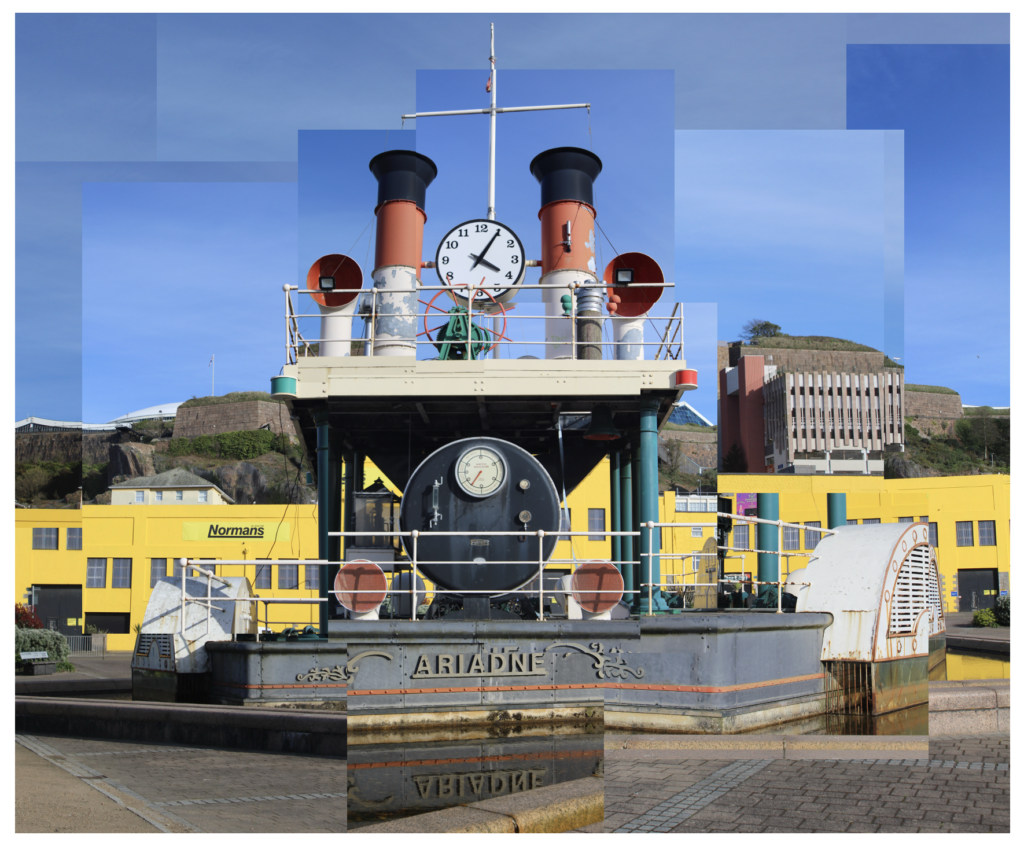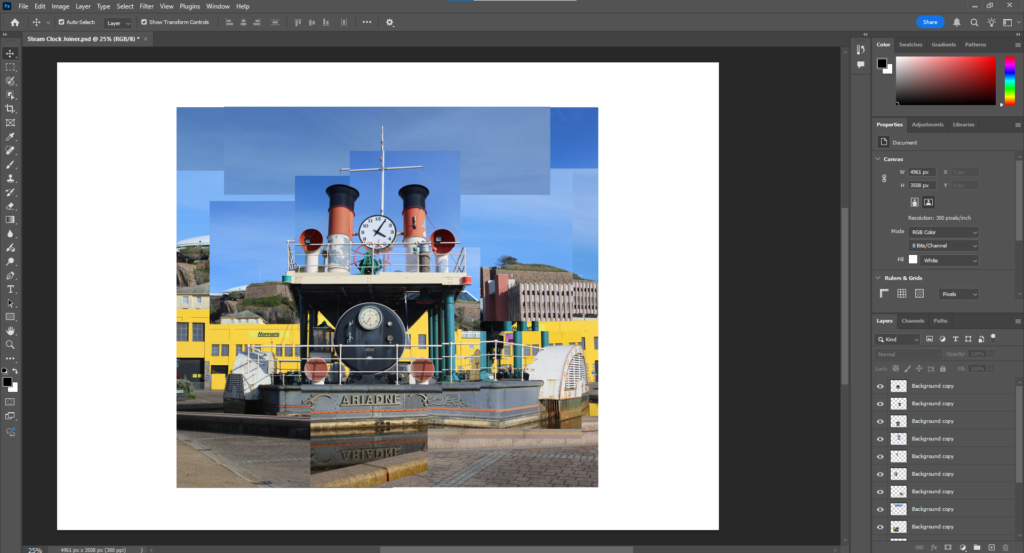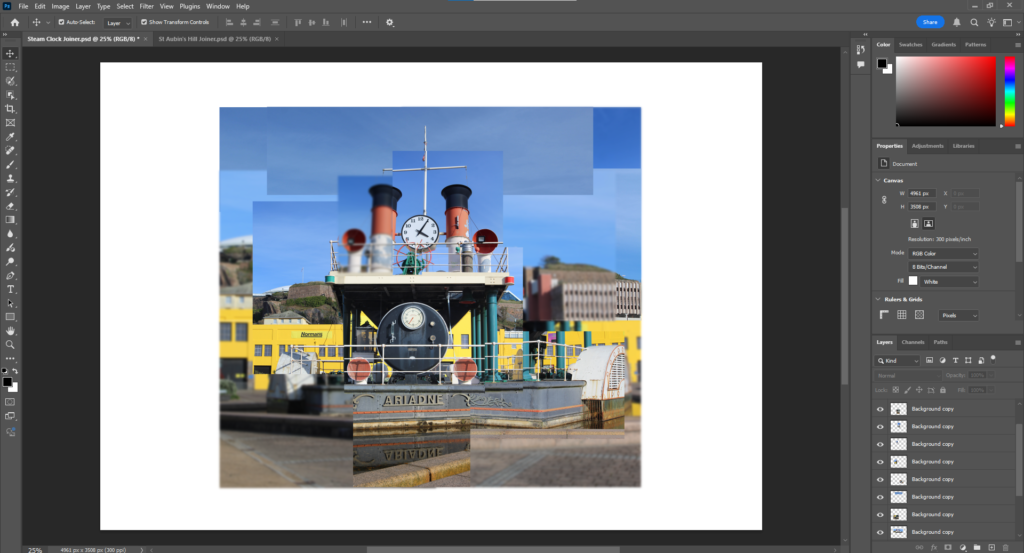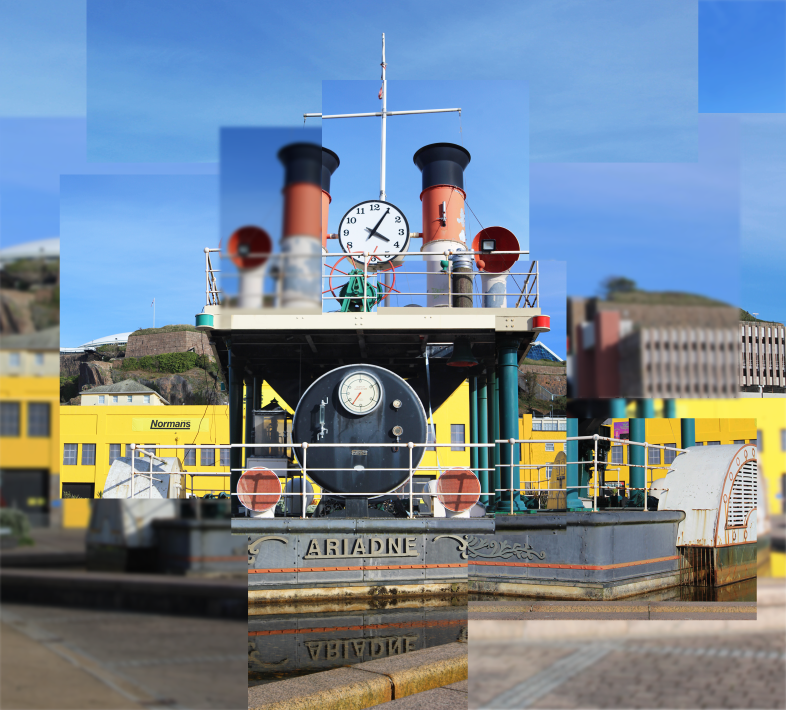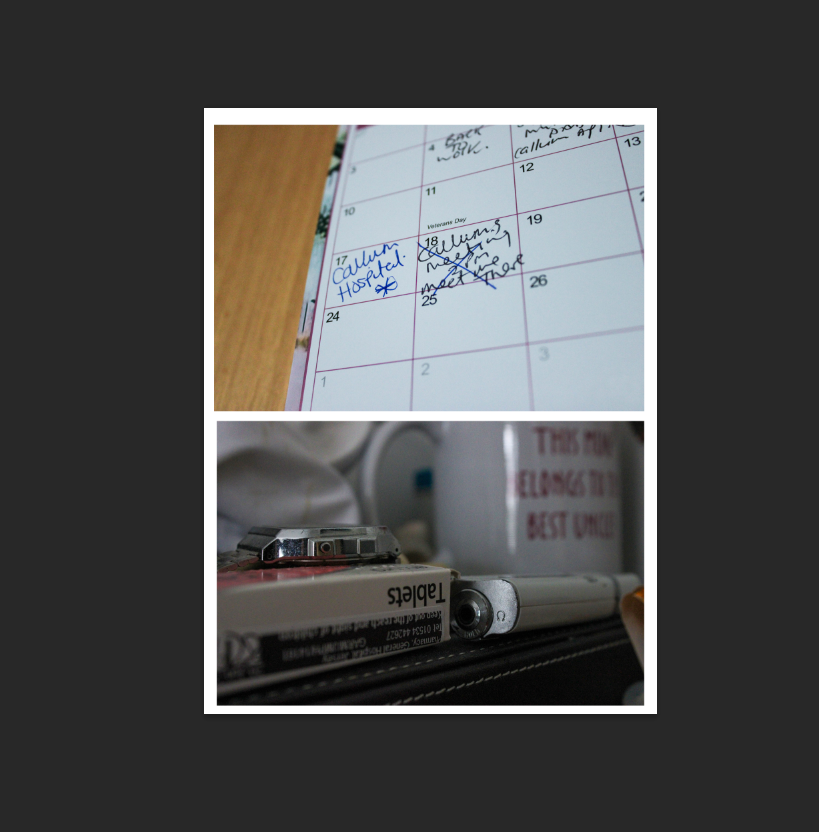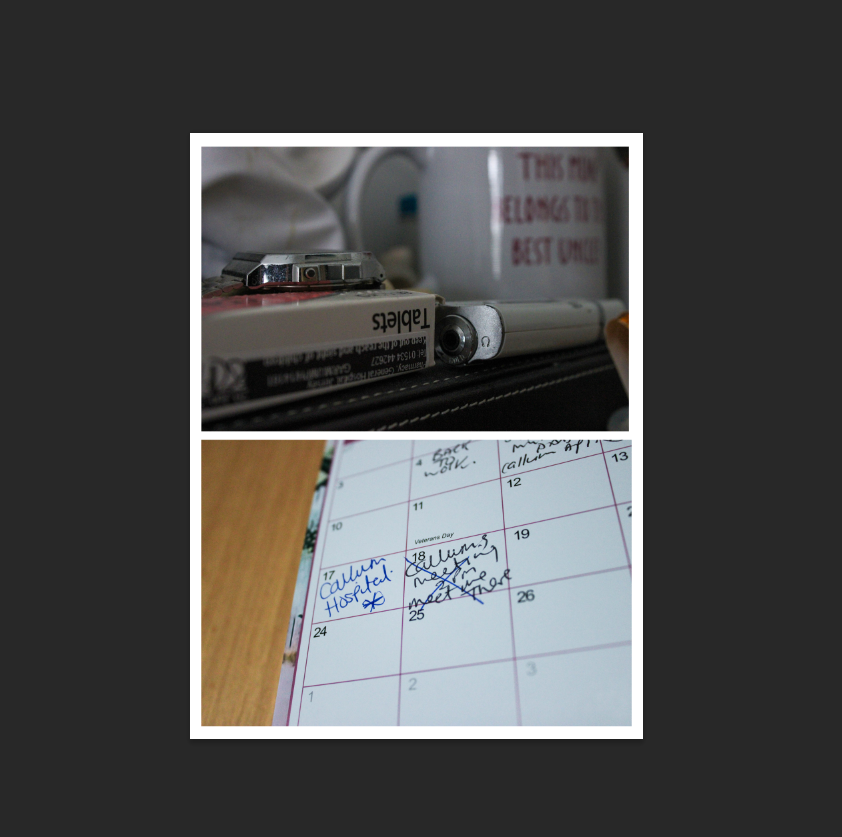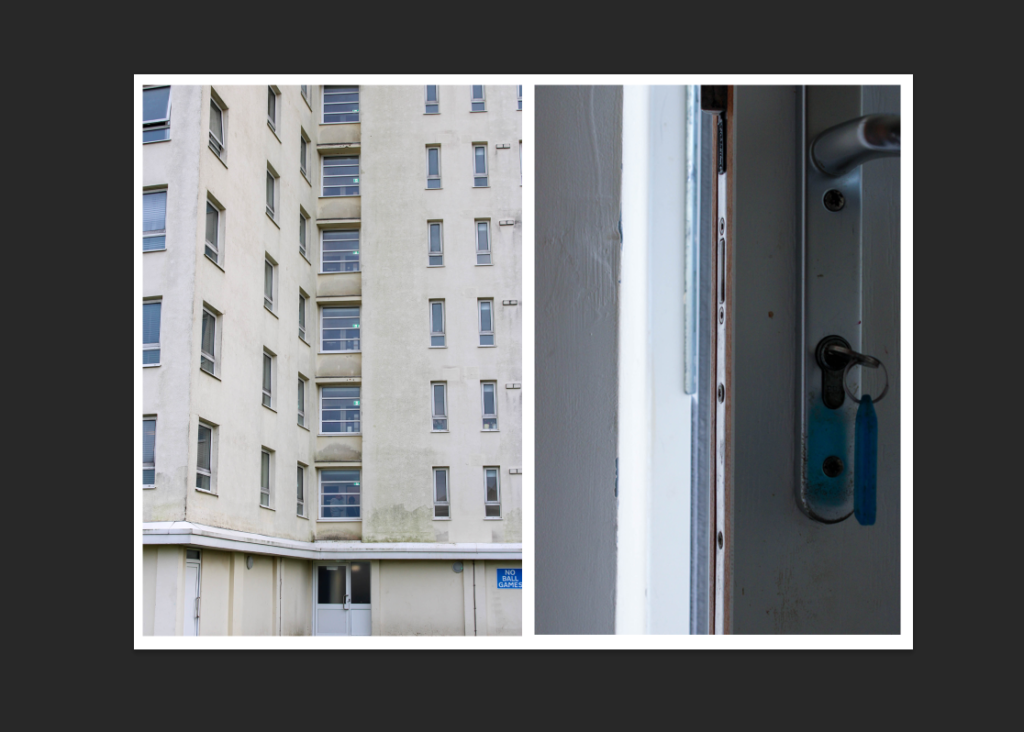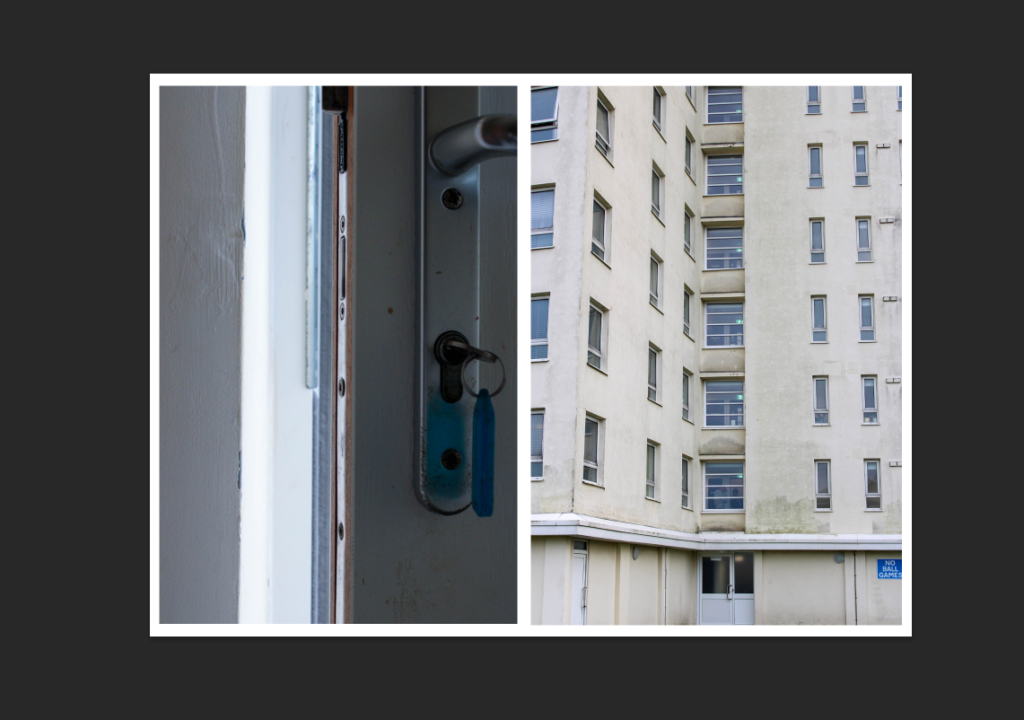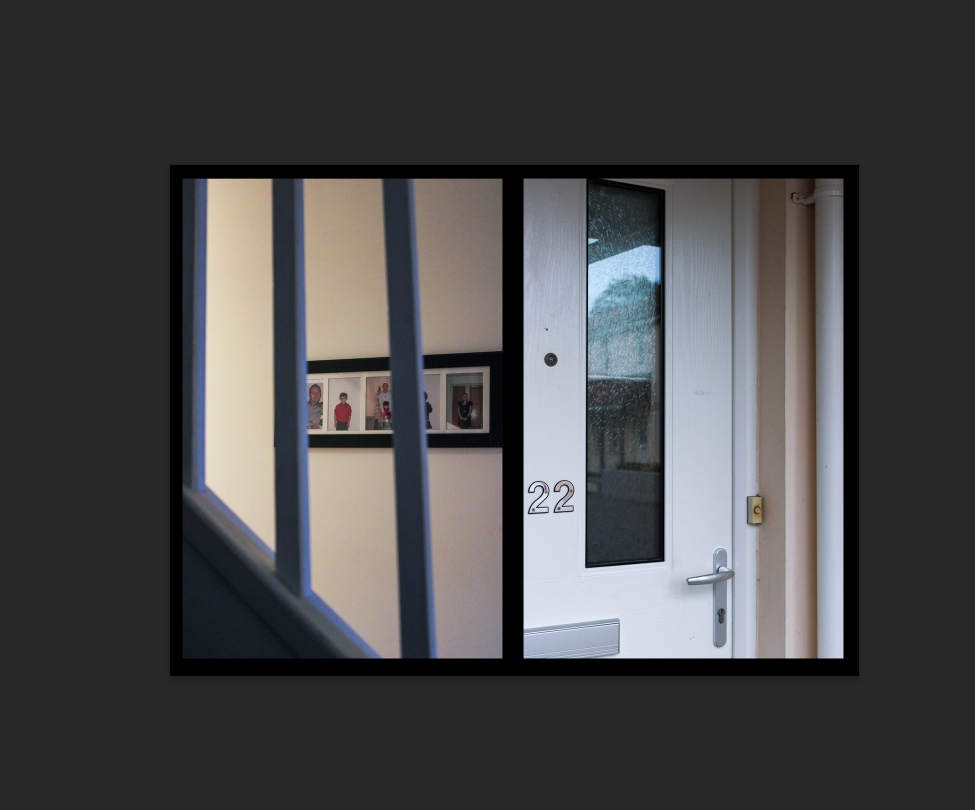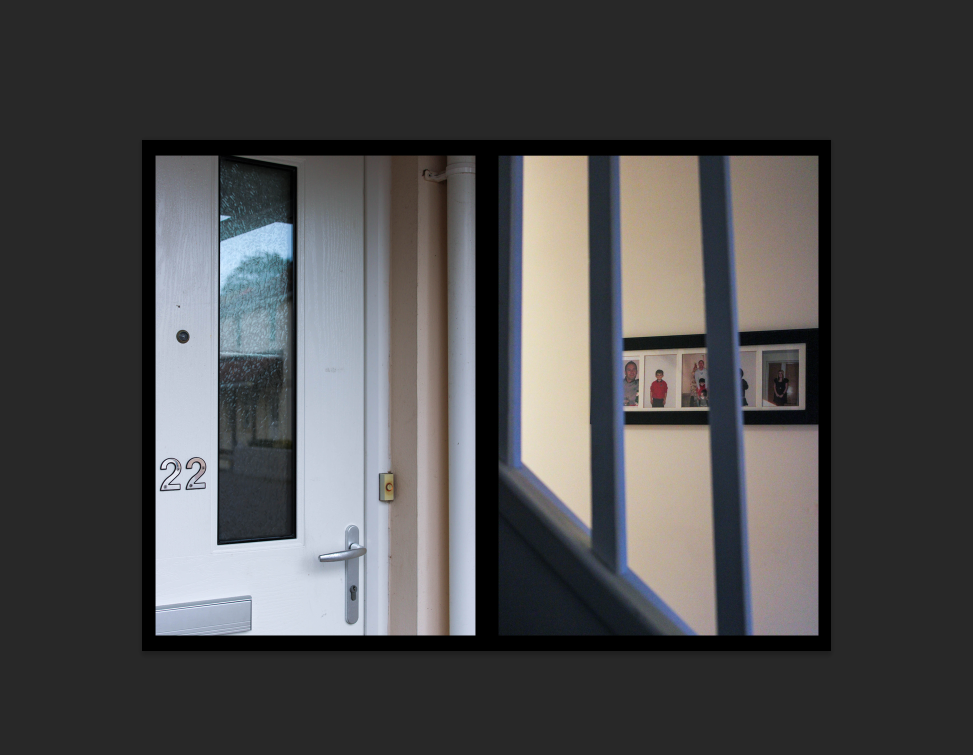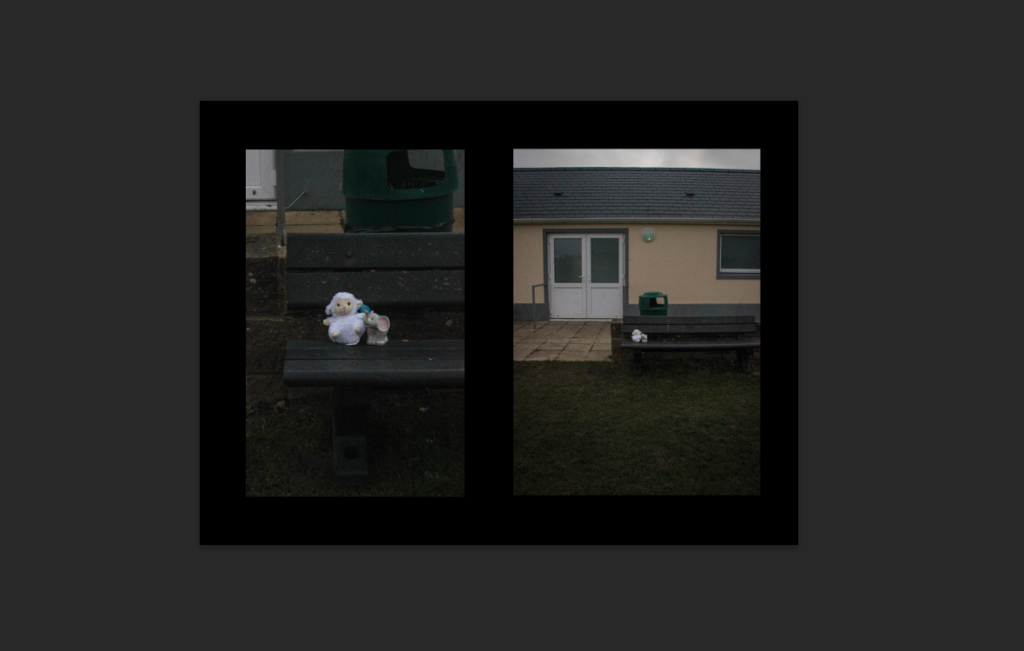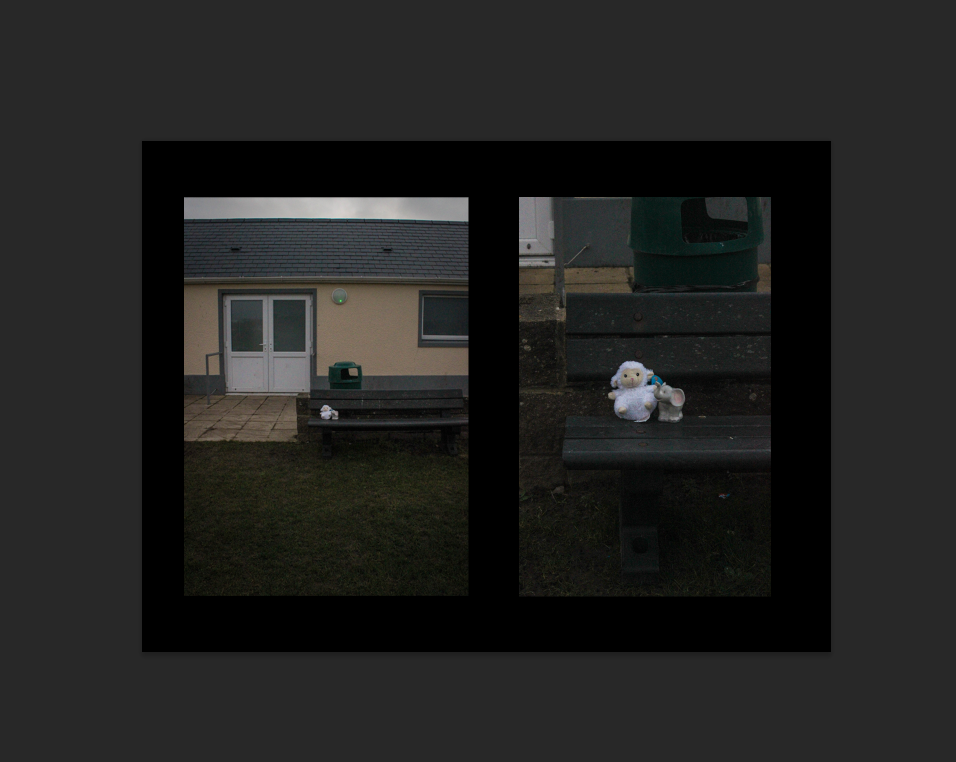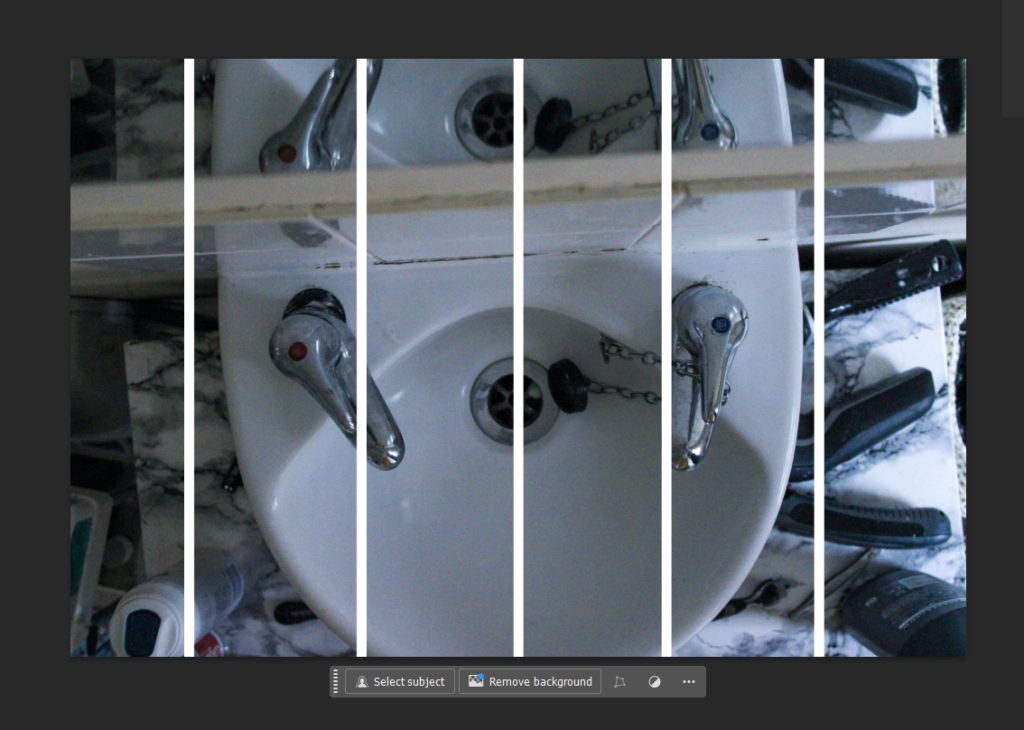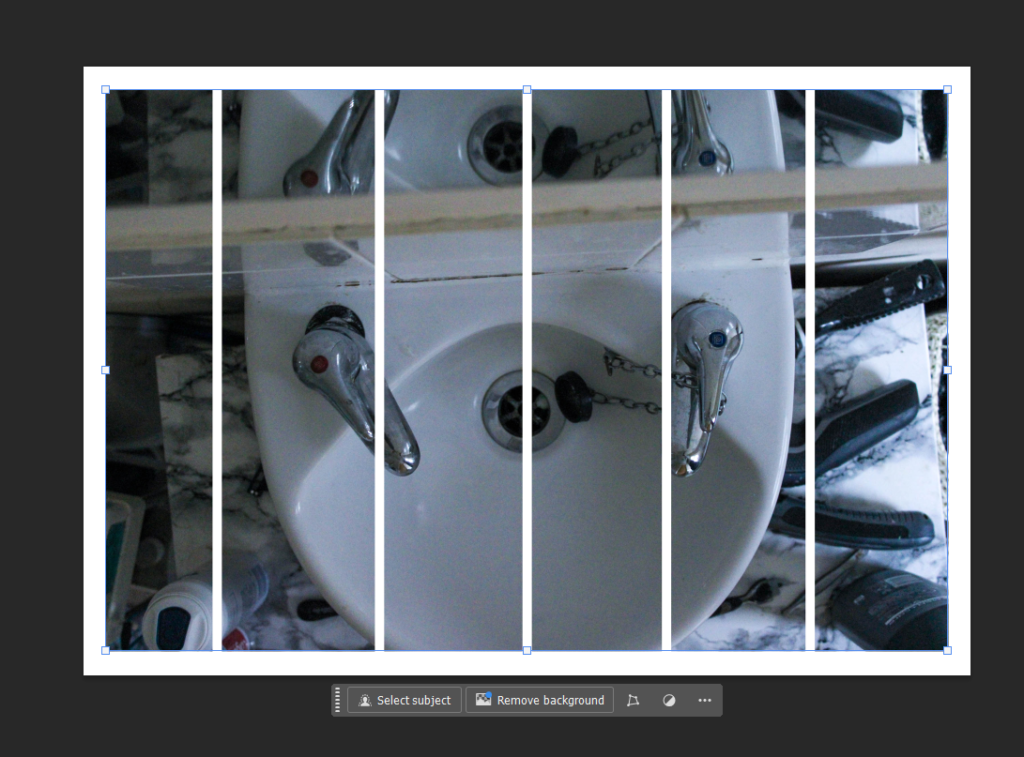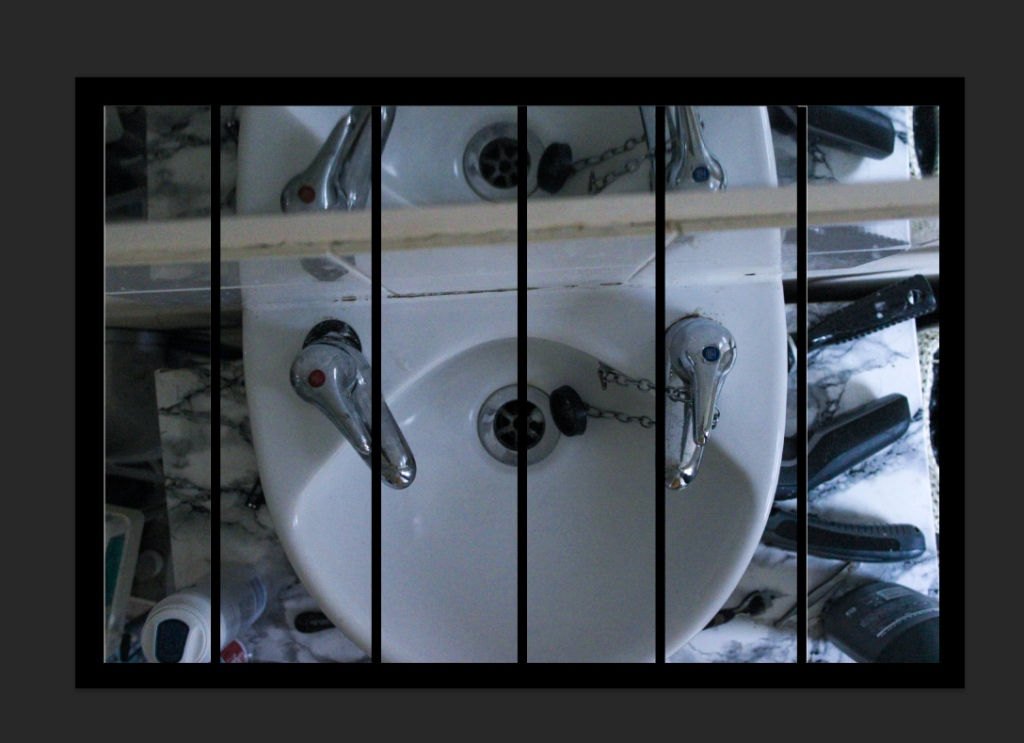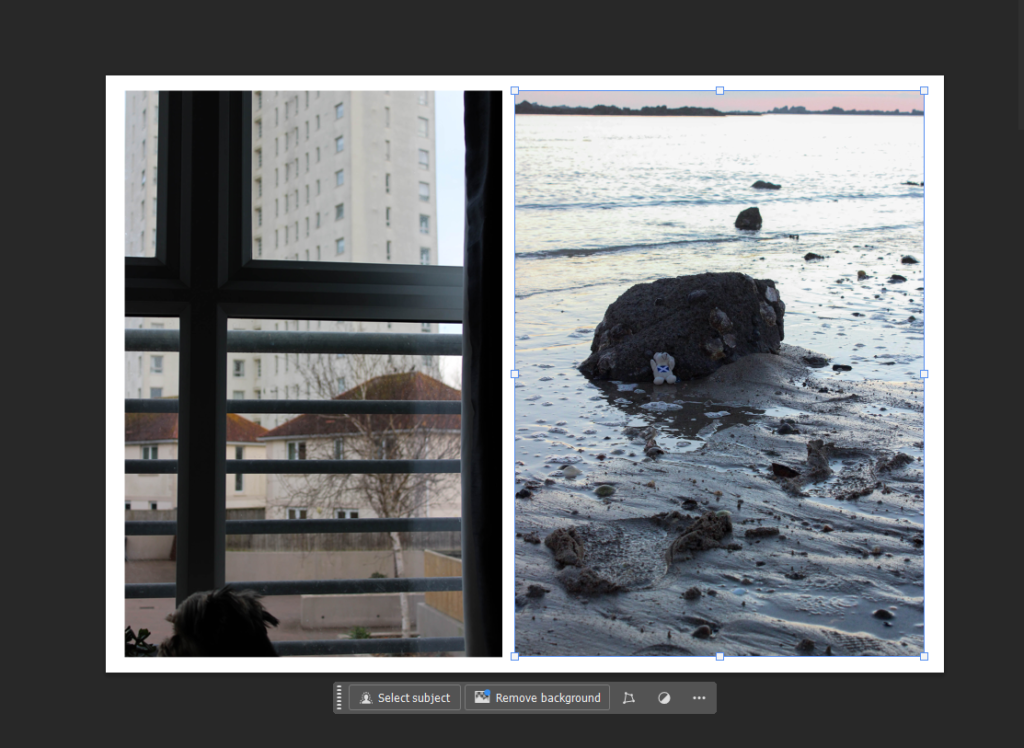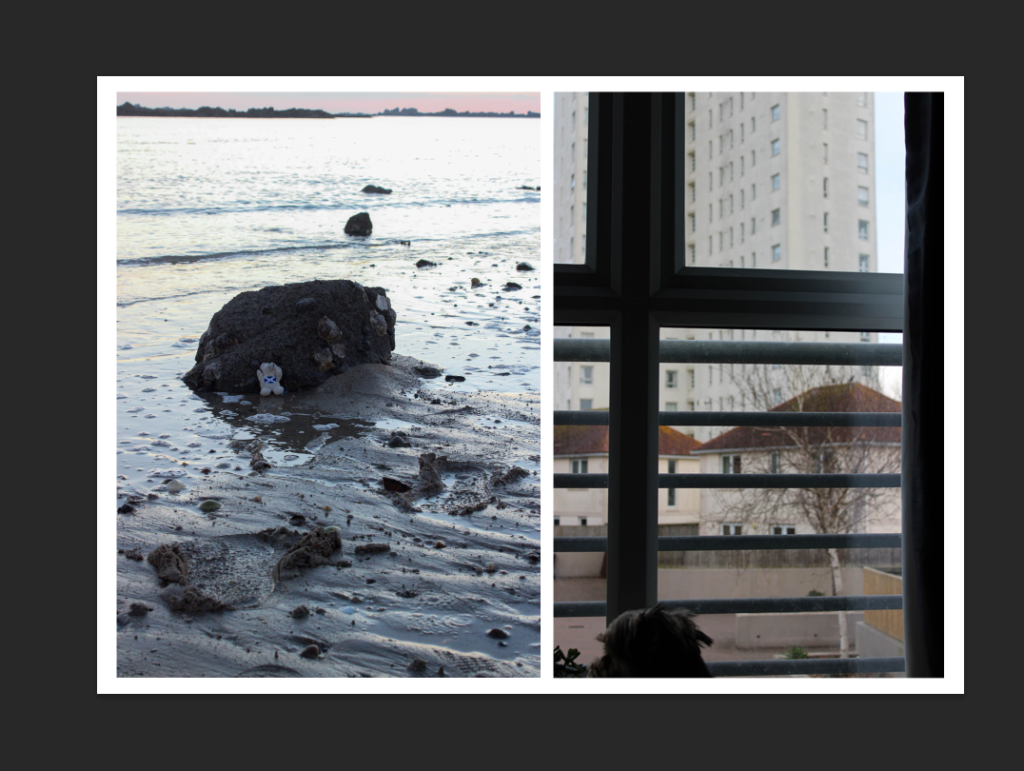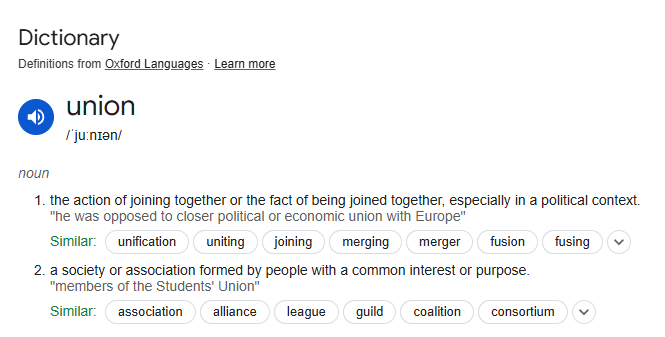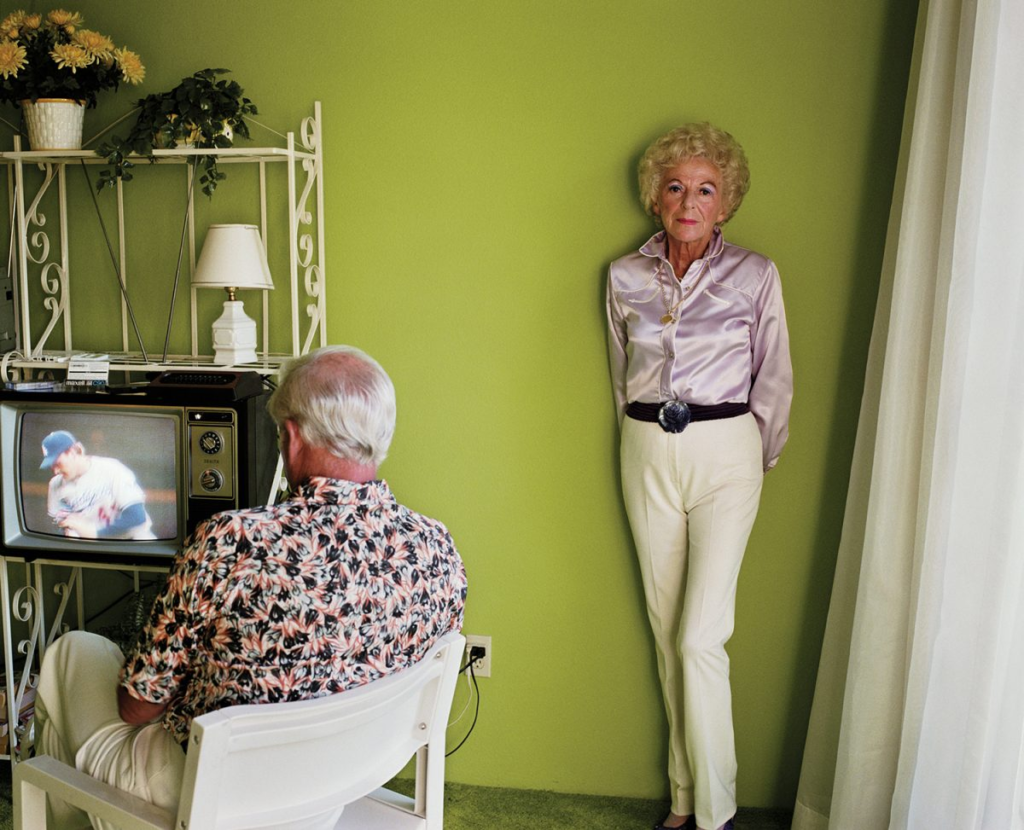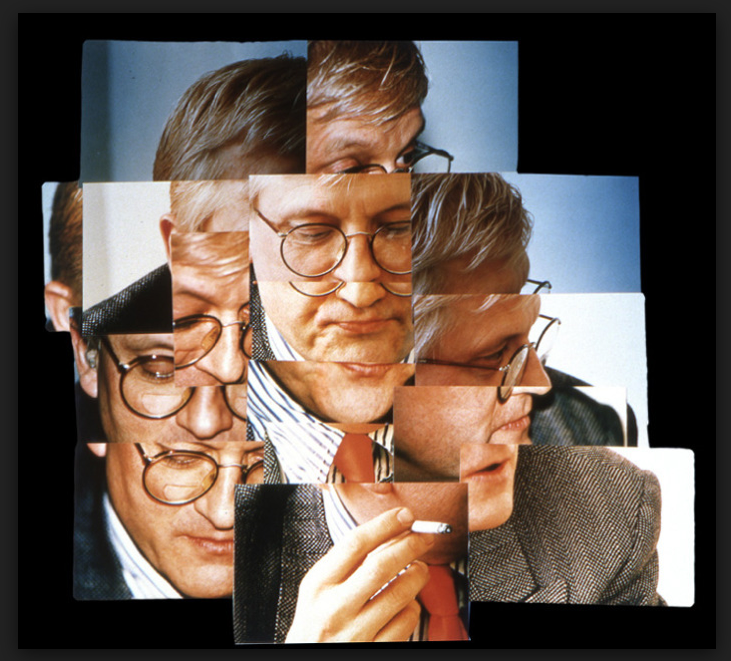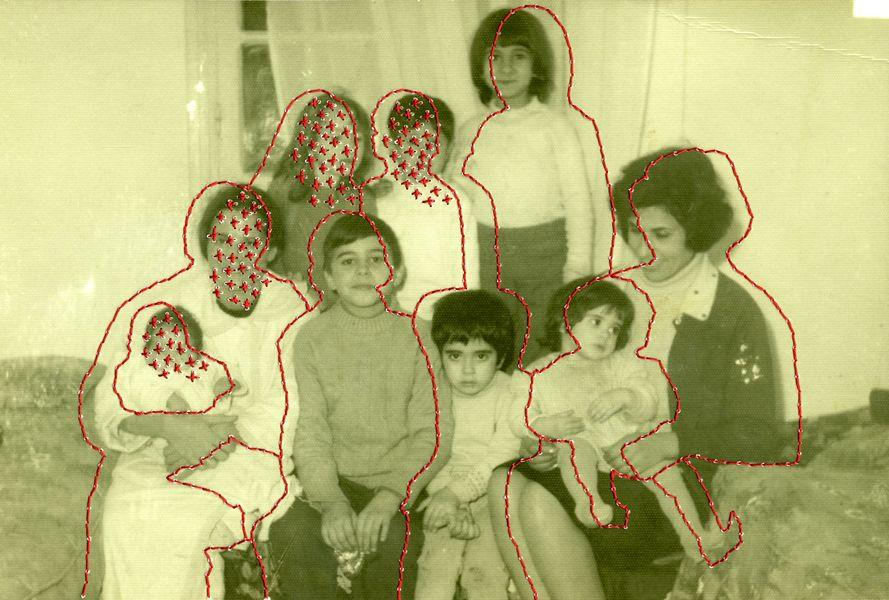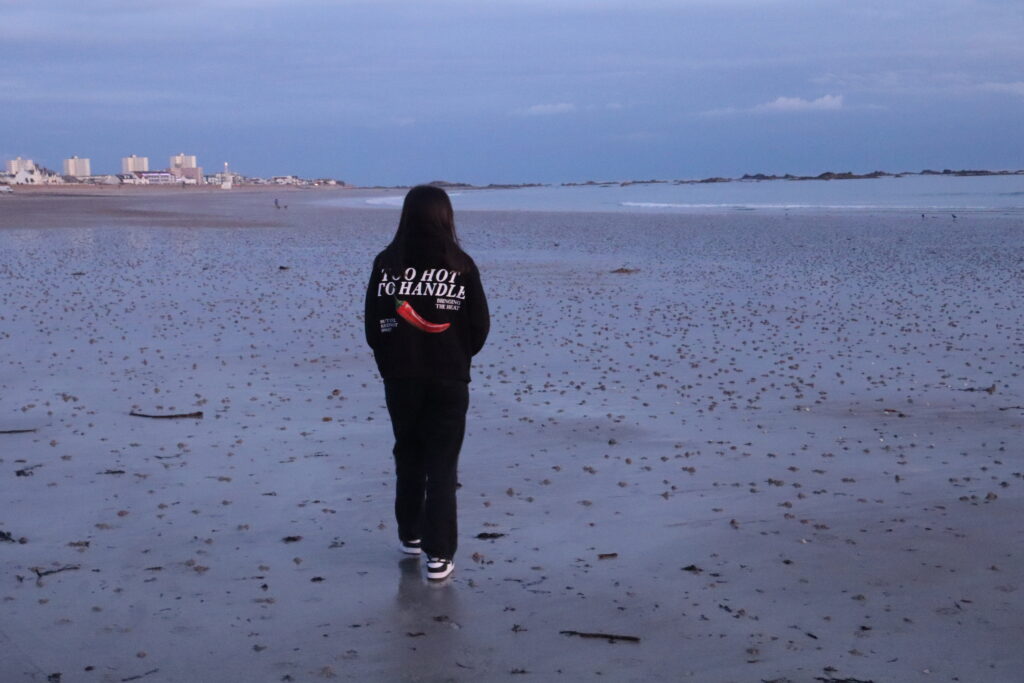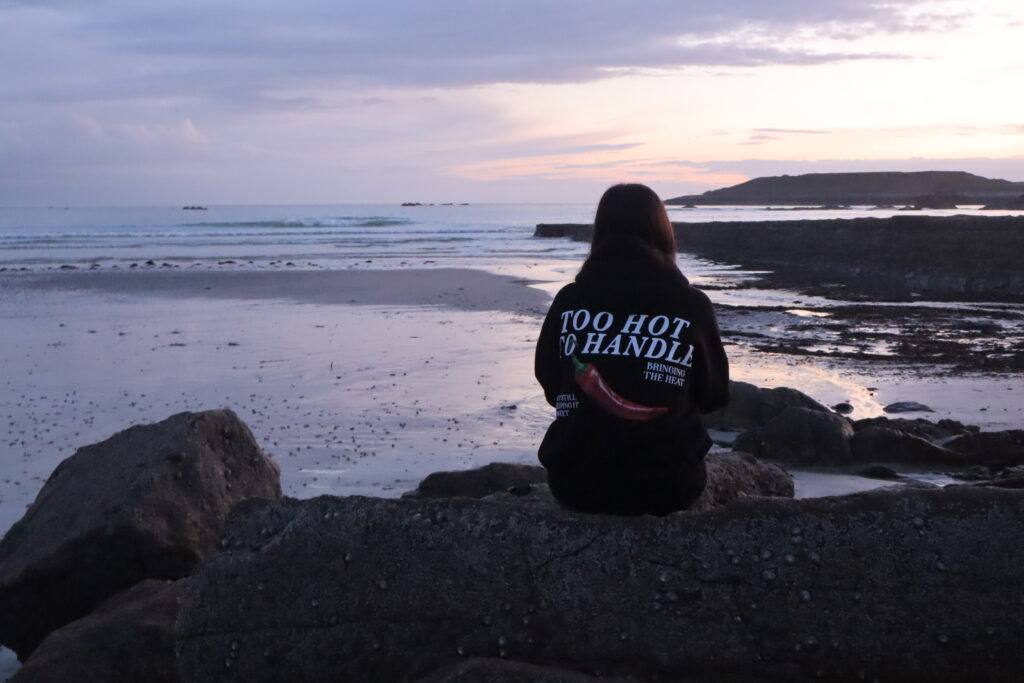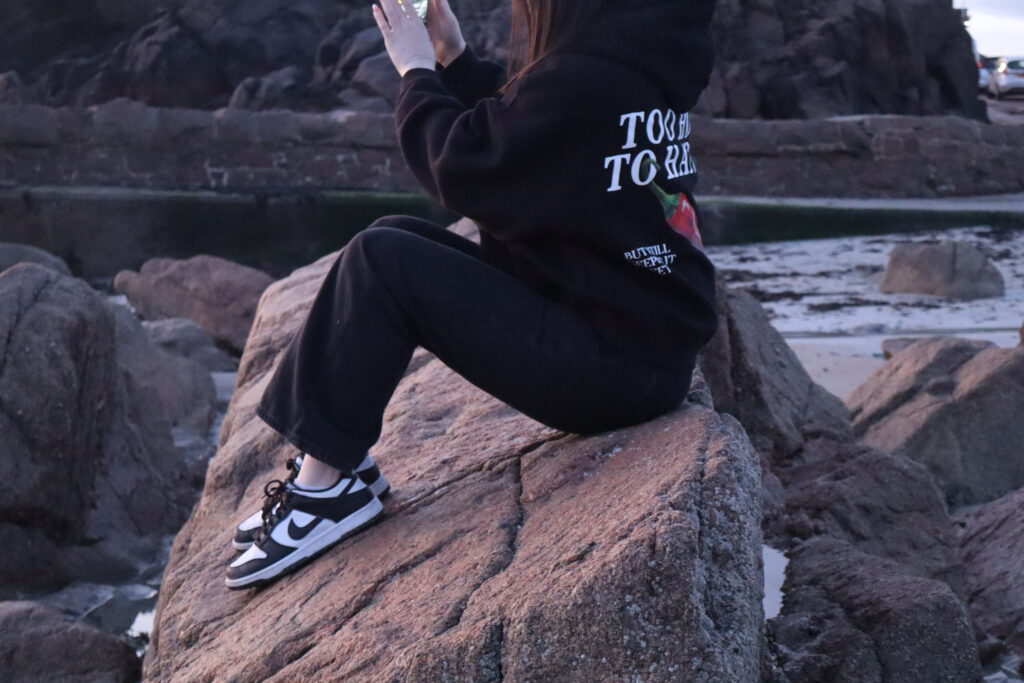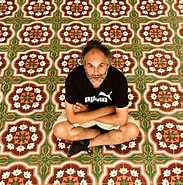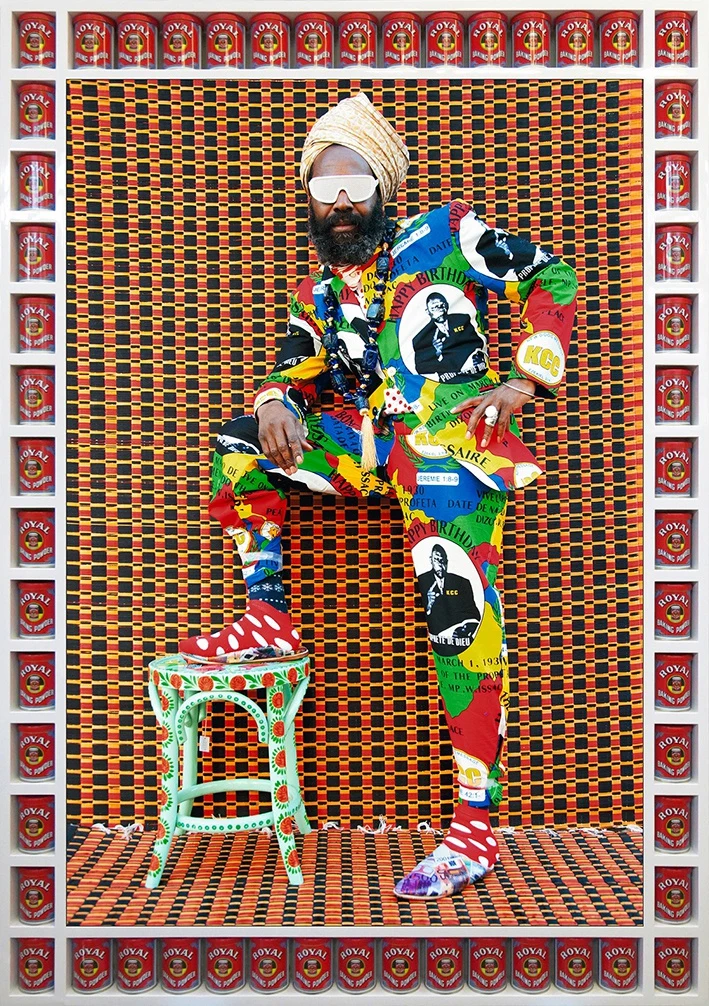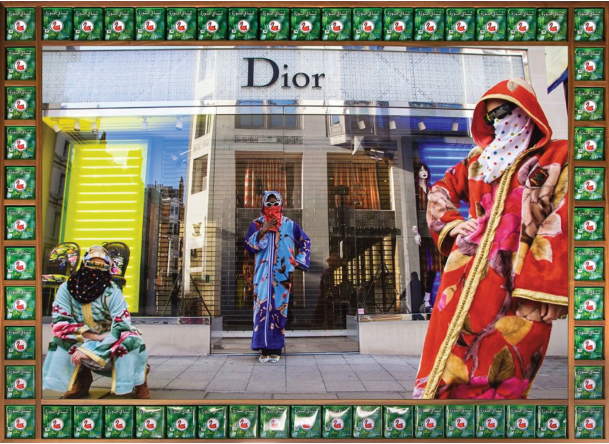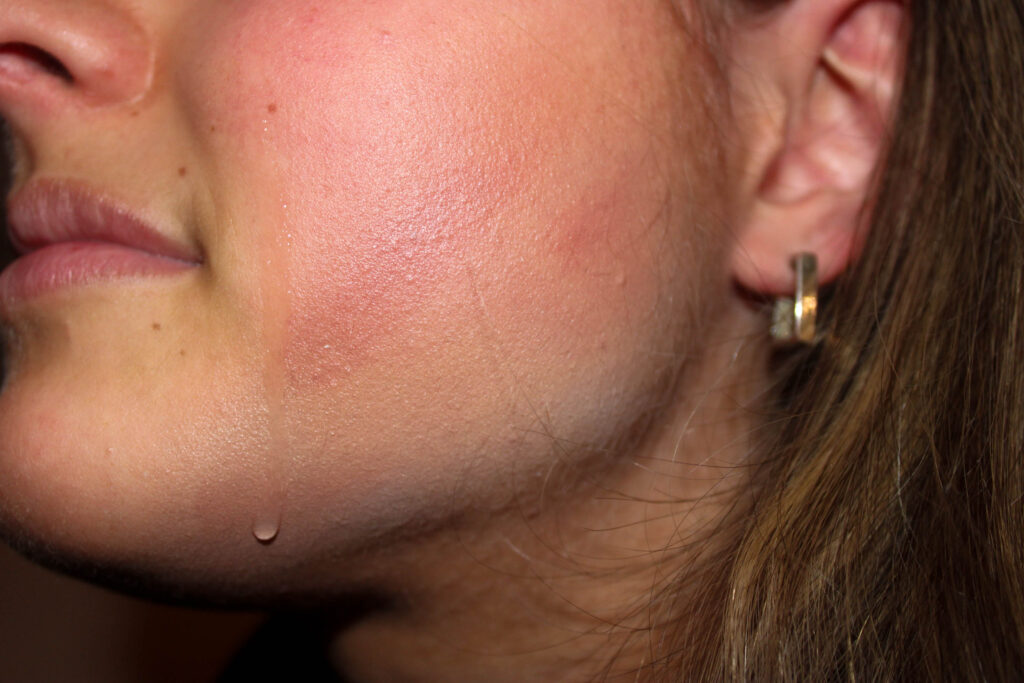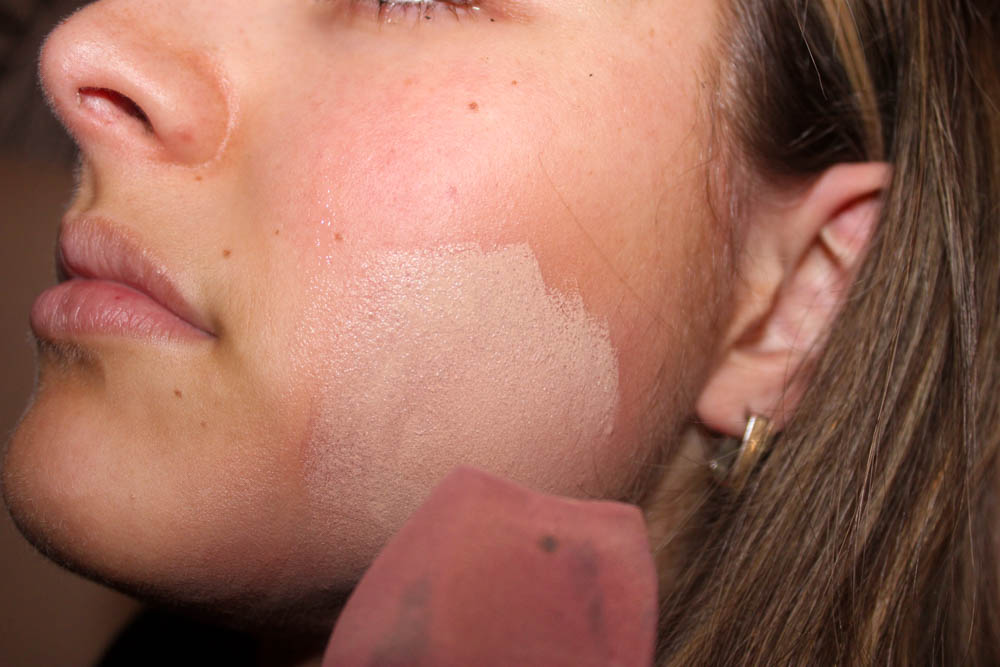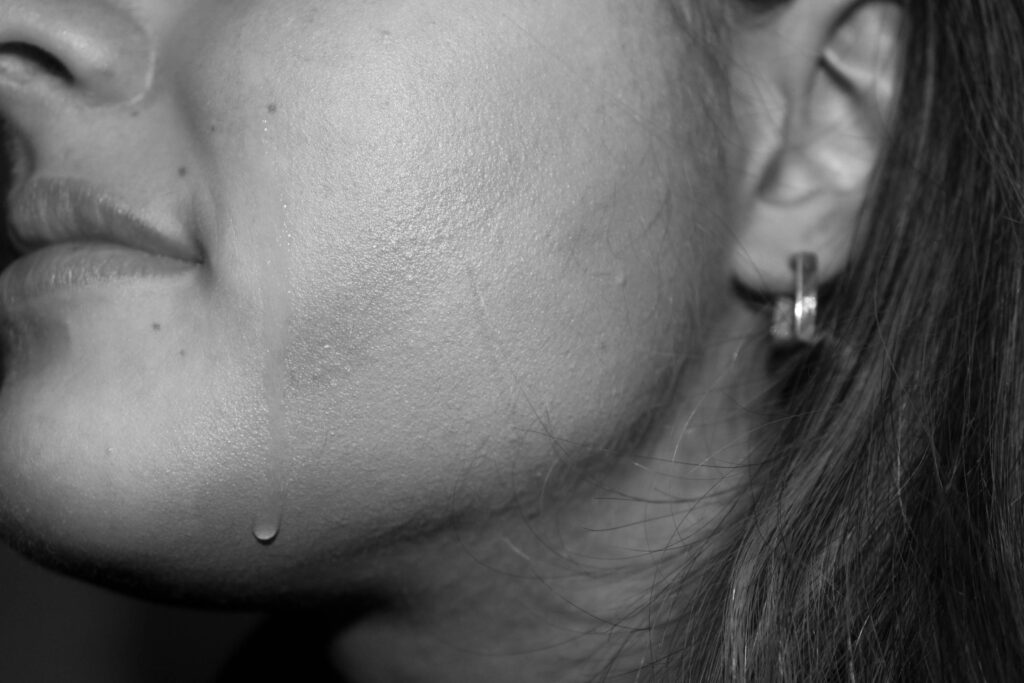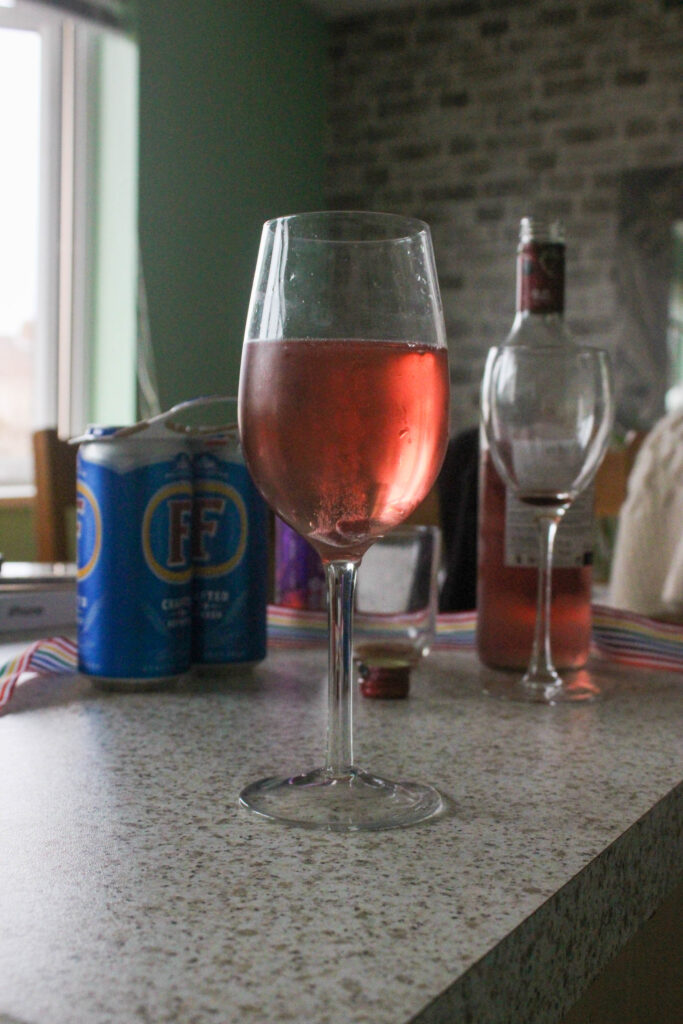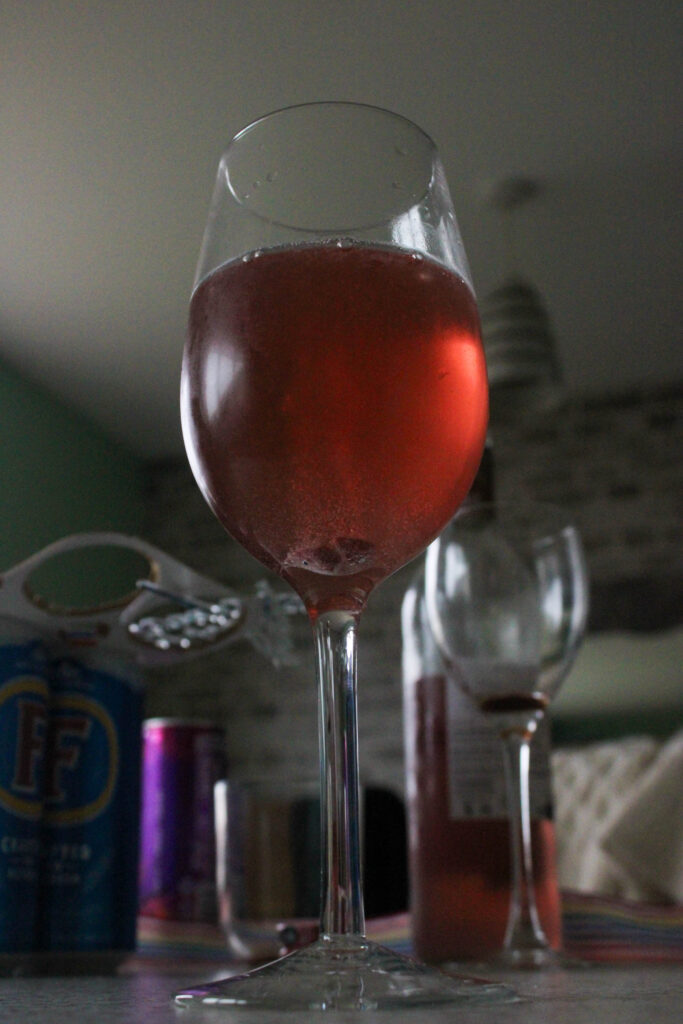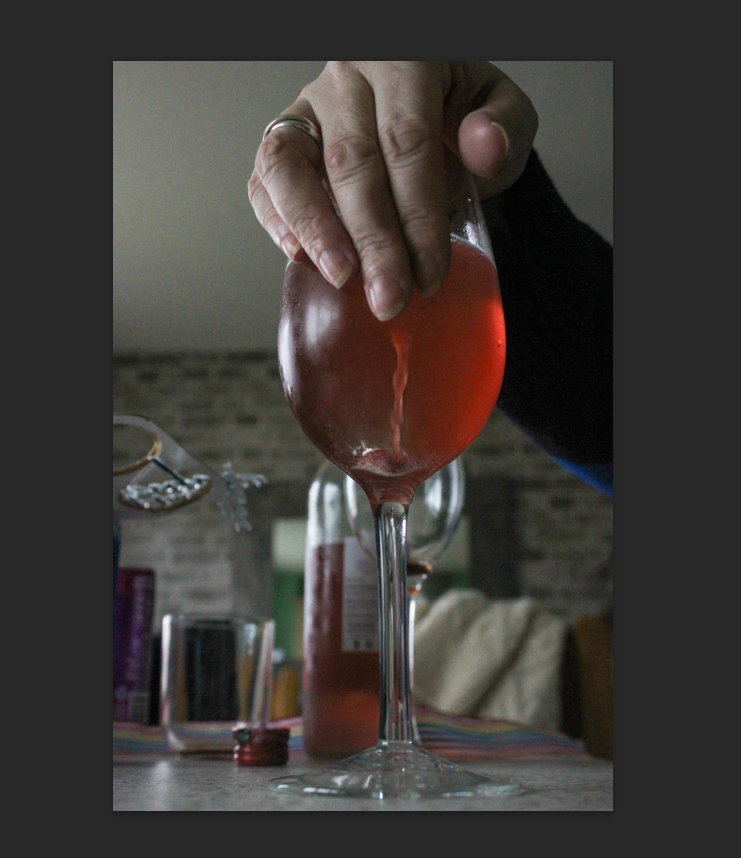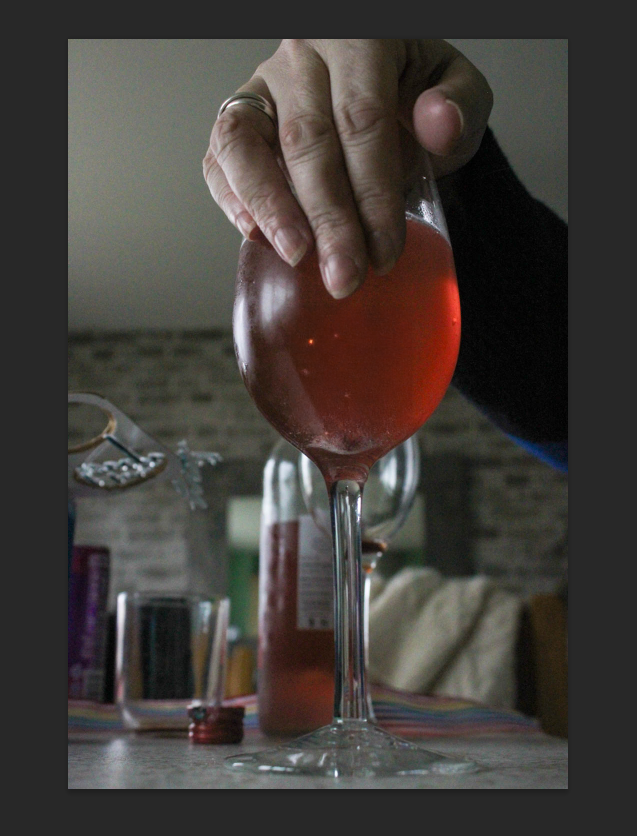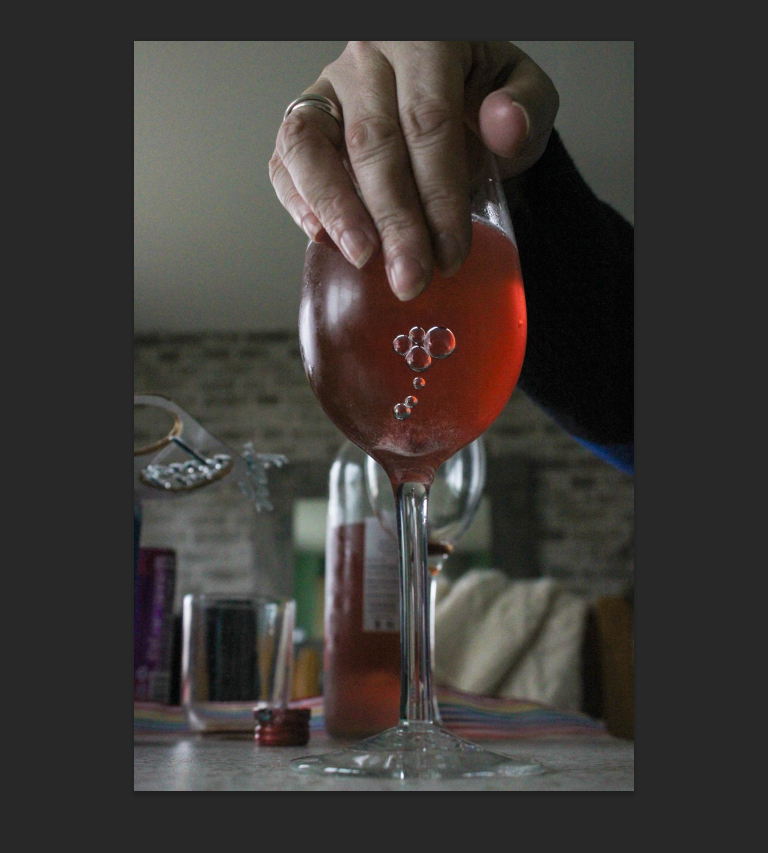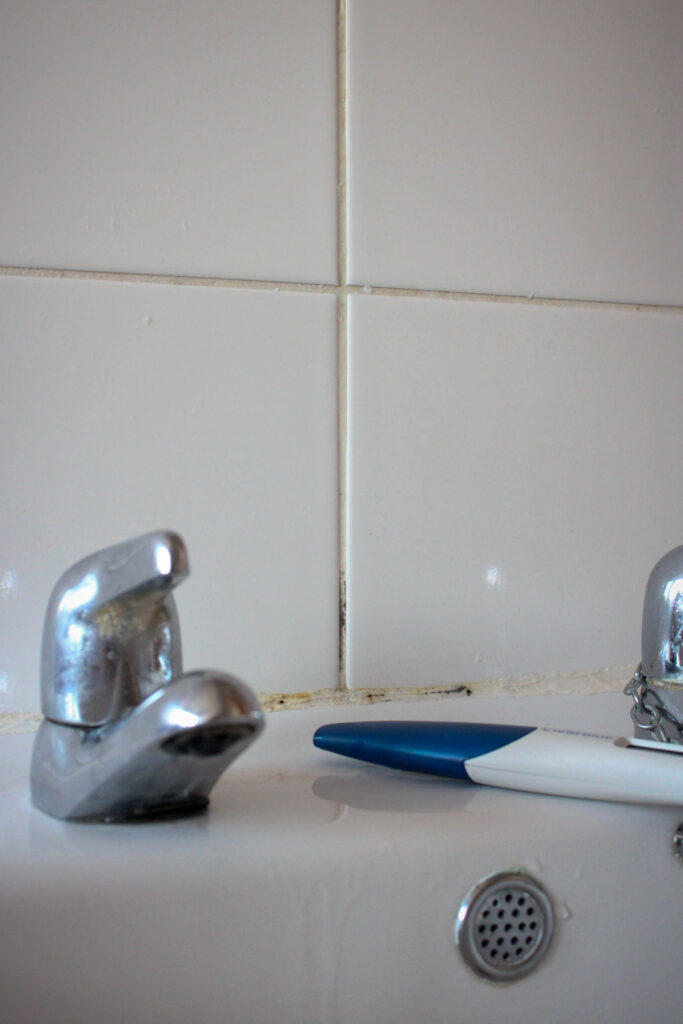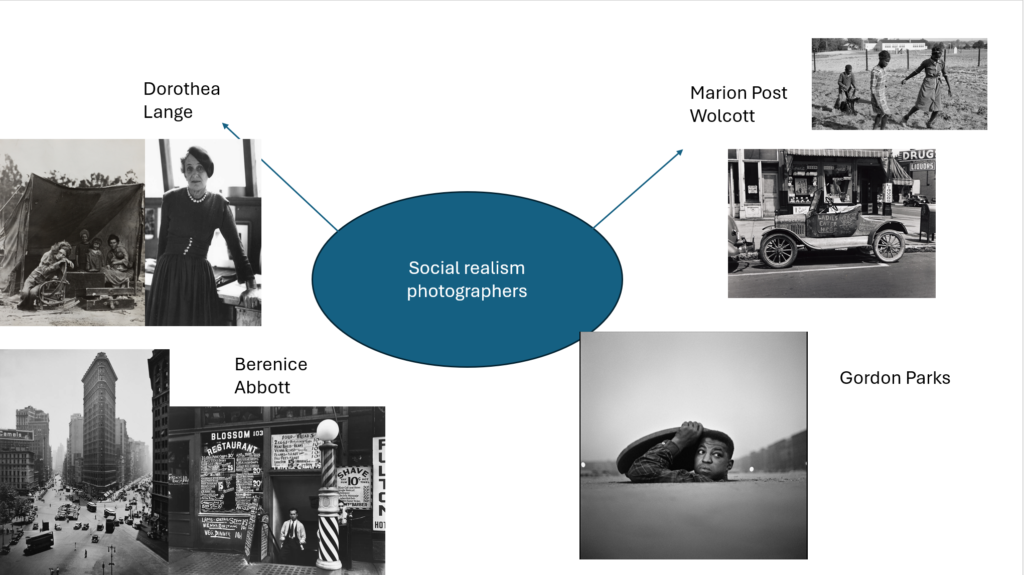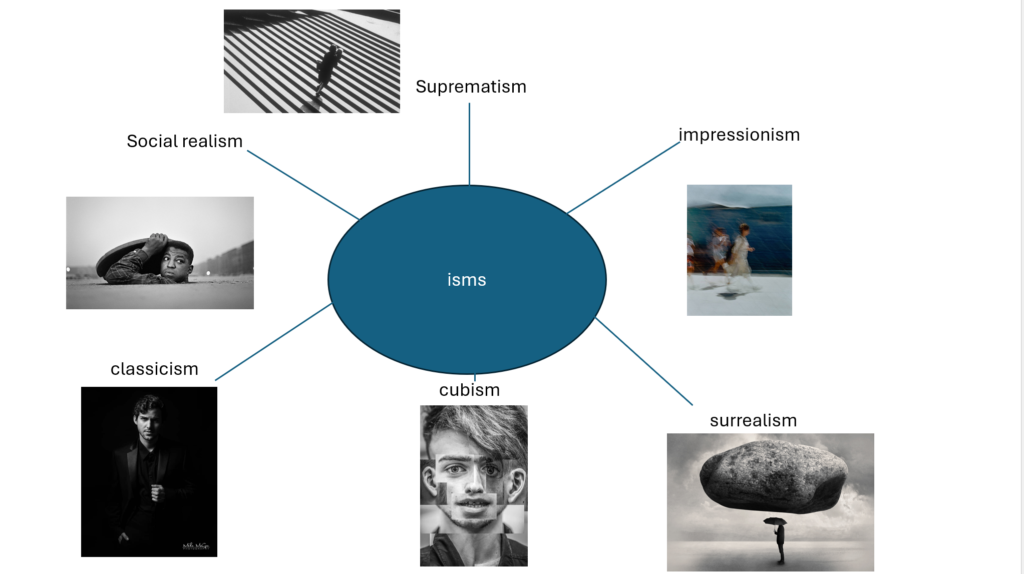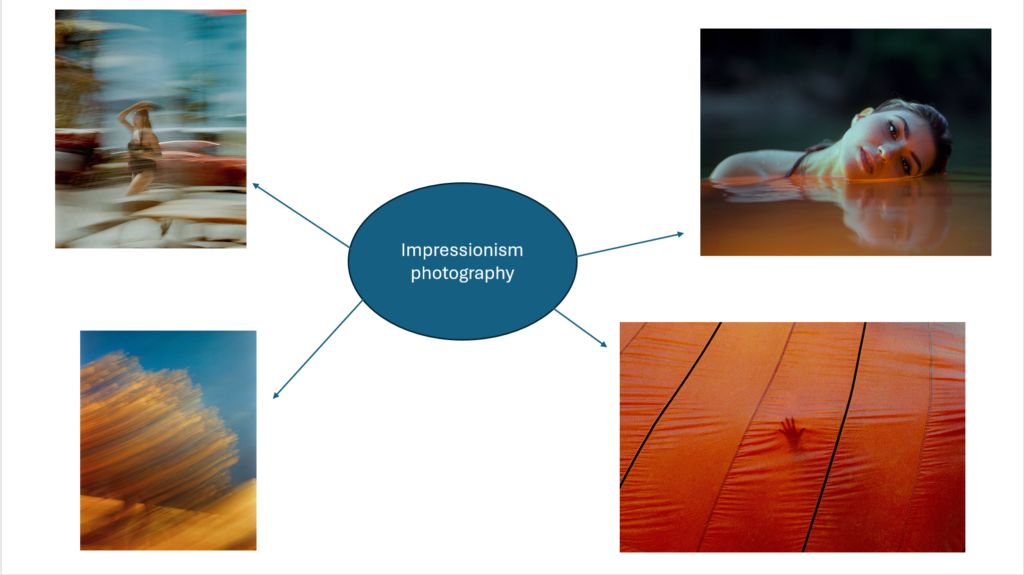Contact sheet:
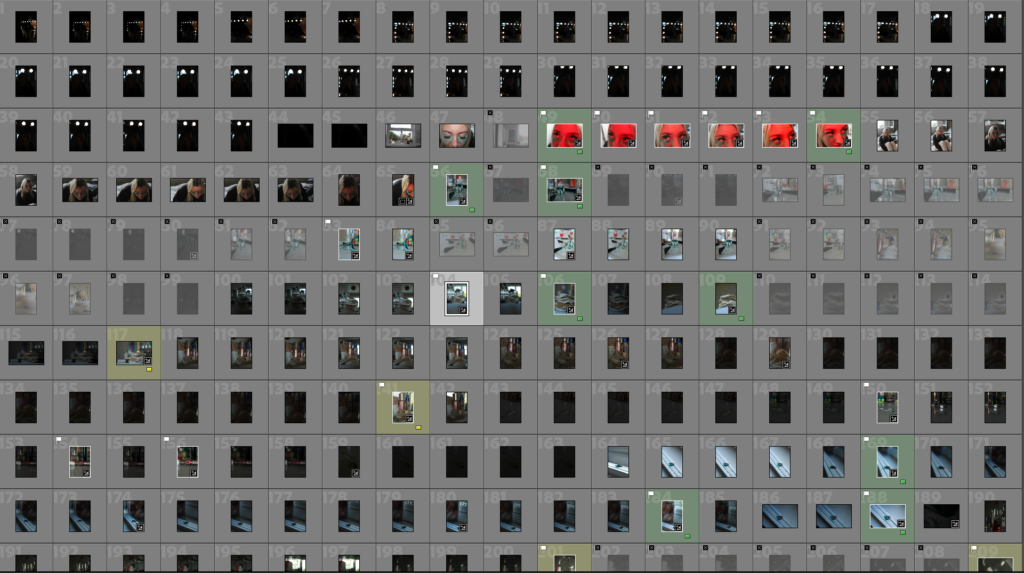
Once I had uploaded my images I started by labelling images yellow or green, yellow being for images that I felt I could use however there could’ve been better versions of it or green for images I thought were more successful. I flagged these images after so it would be easier for me to export them all at once, and rejected the ones where I didn’t like the composition.
I did this photoshoot using Hannah Altman’s ‘And Everything Nice’ work as inspiration, looking into the impacts and repercussions of the pressures of the beauty standard, specifically against young girls. However, I think that my images have multiple wider interpretations within the feminist movement.
My images:
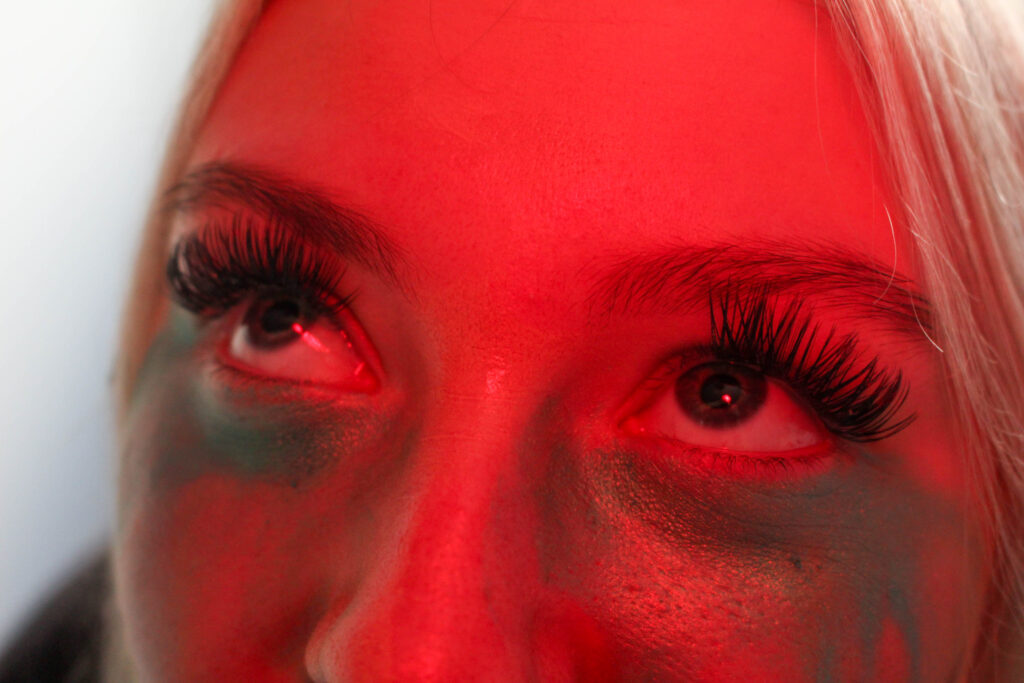


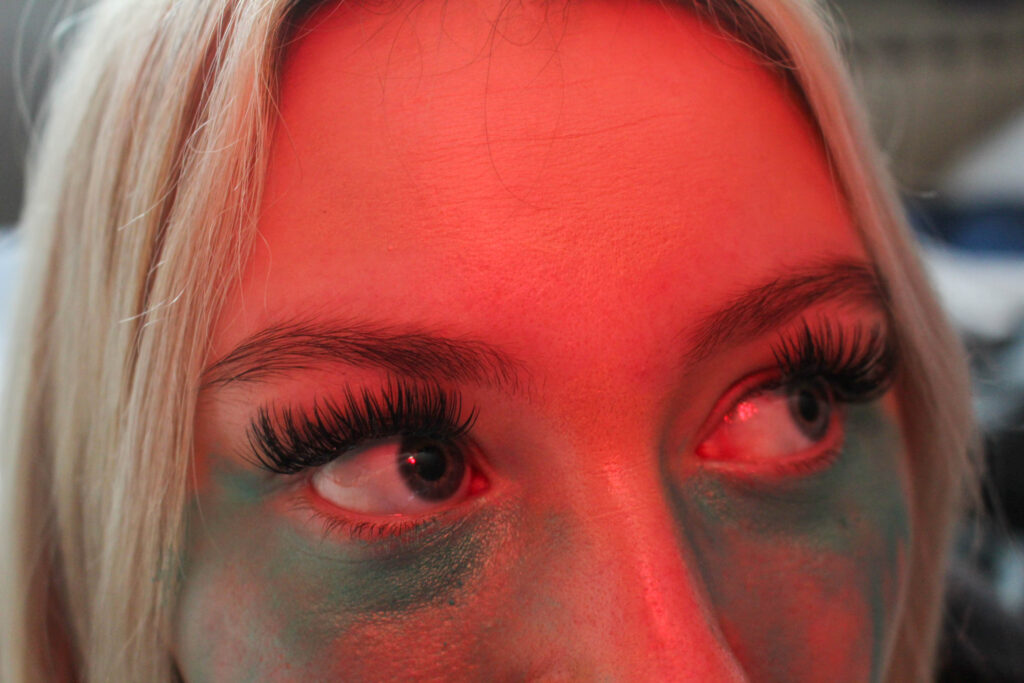
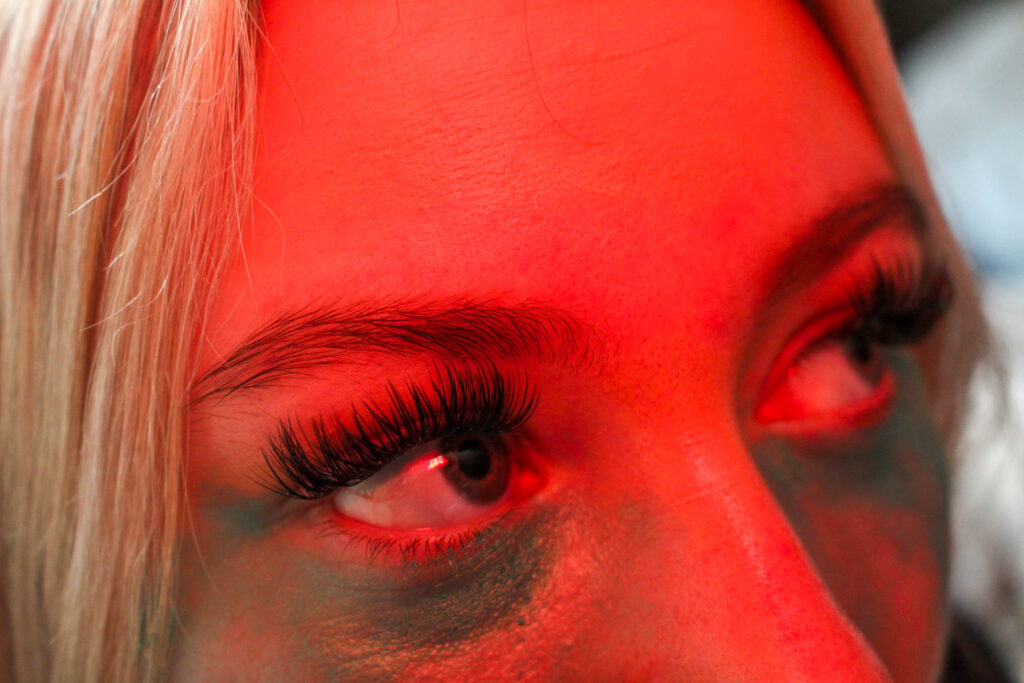
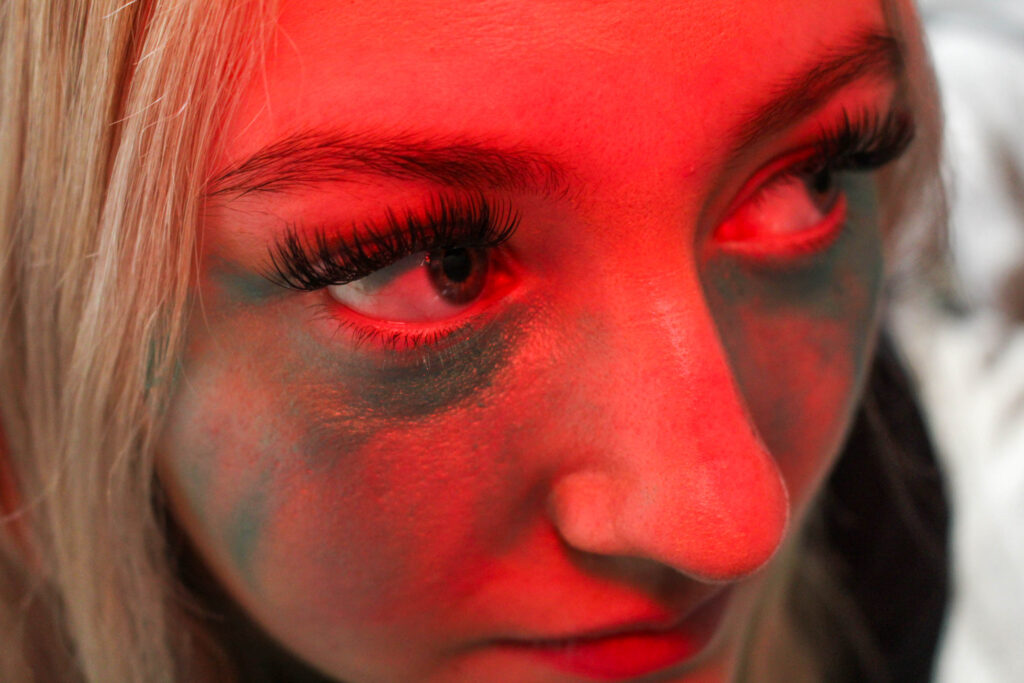
For these images here, I actually used the flash on the camera but covered it with my hand to create this red glow on the subjects face. I did this because I felt that the image alone would look quite bland as it is only the upper half of her face, and this also emphasized the blue iridescent tone of the glitter underneath her eyes. I got my subject to look in different directions in order to make it appear as if she is looking around bewildered.
I used a short depth of field so that the only area in focus would be her face rather than including the background because this meant that the viewer wouldn’t get distracted and start looking at areas that aren’t contributing to the meaning behind the image. My personal favourite is the first image because the background blends with the side of her face to make it appear feathered, adding a soft focus to the left side of her face. I think this contributes extremely well to the topic of feminism as this can be seen to symbolise the stereotype that women should be soft, gentle and nurturing. This becomes juxtaposed by the red light across her face as this is commonly associated with feelings of rage and anger, feelings that are arisen by misogyny. This is a implicit way of challenging the traditional stereotypes against women as it becomes a metaphor for the anger that is felt by millions of women and girls when they are told they should be quieter or more soft-spoken.
Whilst Hannah Altman predominantly uses a pink glitter in her images, I used a blue in this set as this is the colour that is traditionally associated with the male sex, for example in children’s advertising the colour scheme is typically shades of blue due to the stereotype that girls should wear pink and boys should wear blue. By using this blue, it enables me to make a clearer establishment of what my images are about. When this is associated with the colour red to symbolise rage, this could also be representative of male violence against women, hence why the subject communicates her fear with her eyes instead of her entire face.
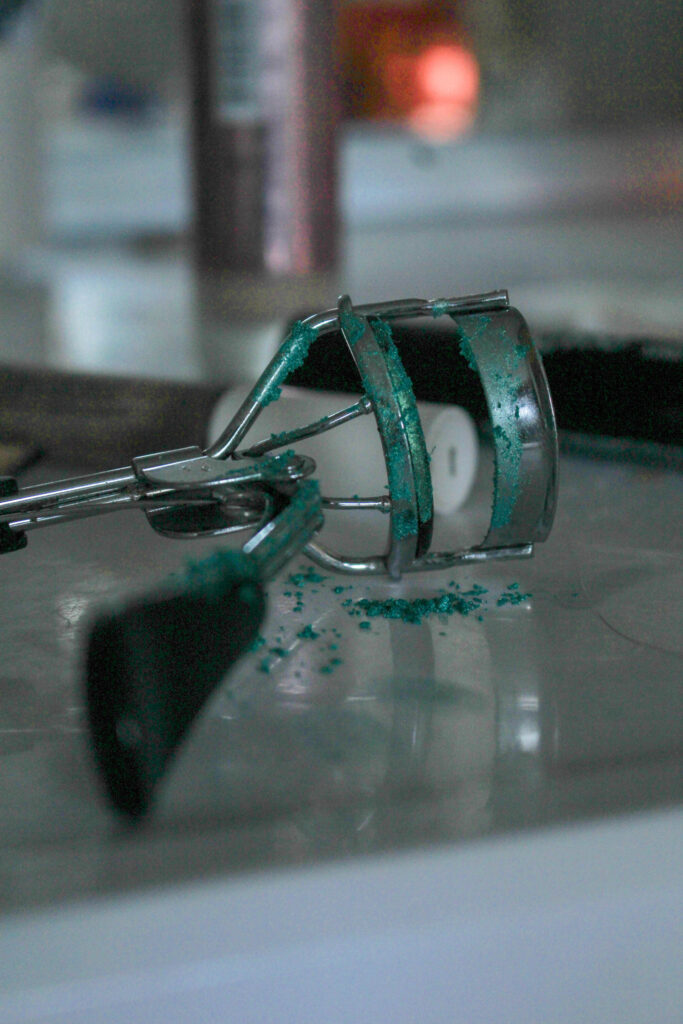
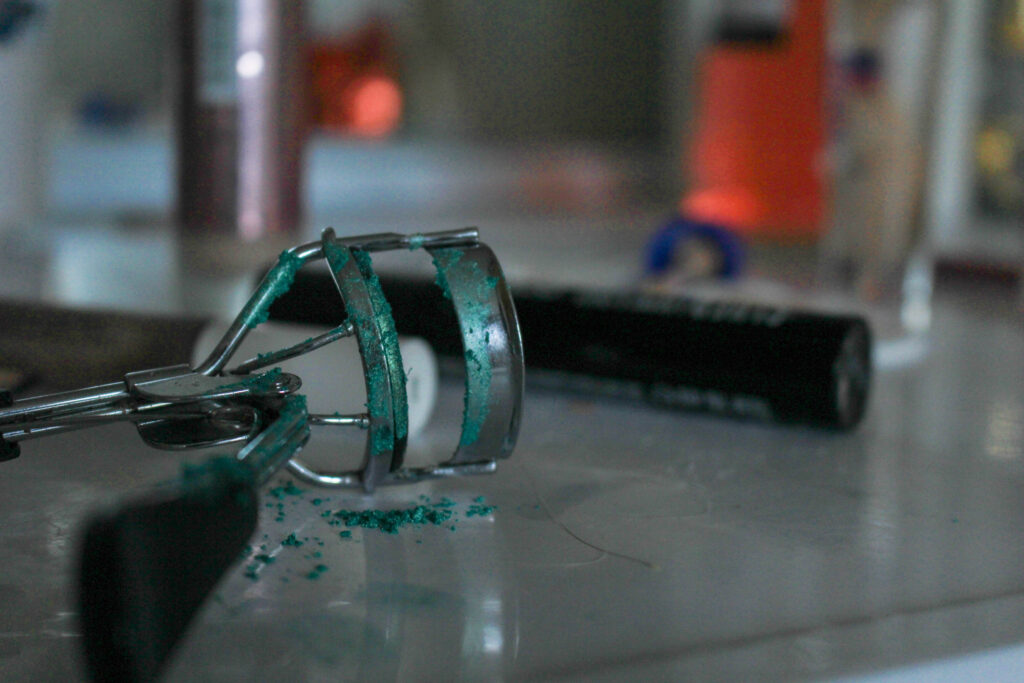
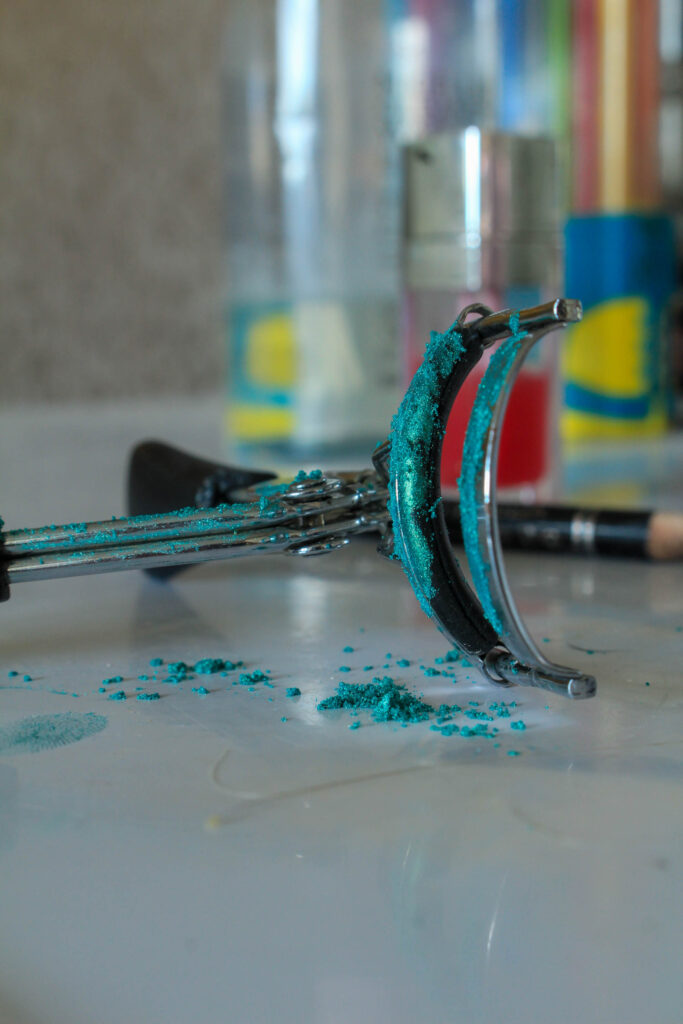
I incorporated 3 versions of my set-up using an eyelash curler and the same glitter used in the previous images because they were shot from different angles and I wasn’t sure which way I would prefer when it came down to creating my photobook. Also, in my previous photobook I used quite a low exposure as the topic of my personal study was quite intense and dark, so I included two images using a low exposure as I may want to utilise this again to highlight how much of a pressing matter this is.
In all 3 images I have used a short and soft depth of field to create a blur on the other beauty products scattered around in the background because I wanted to ensure the eyelash curler was the focal point of the image, however I also did this to make sure that the context of the image was still consistent in the background rather than it just being blank and empty. For these images, I grabbed a handful of different makeup products and spread them out in a chaotic, random way as if they had just been discarded for and chucked around. My intention behind this was to make it appear as if someone had erratically been putting on makeup in a frenzy, because this can demonstrate the pressures of the beauty standard specifically on teenage girls. With the pressure of wanting to look like the girls on covers of airbrushed magazines, it is highly likely that these young girls are damaging their skin barriers on their faces by applying thick layers and layers of makeup over and over again in order to feel comfortable in their own skin. This is really important to demonstrate as it highlights the impact of these falsified magazines on young girls, how this develops insecurities over even the smallest things and builds up to break down their self esteem before they even reach the age of 18.
I used a brush to tap the glitter onto the eyelash curler and the pillow of the curler in order to make it fall by itself instead of looking manipulated, I wanted the glitter to look as if it was ‘real’ rather than being something abnormal and that it had been placed there purposefully. I also then did use my finger to create two marks by the handle of the eyelash curler as if someone had just used it before the image was shot. I tapped it over the eyelash curler quite a lot to make it look more dramatic and emphasized, harder to miss. Because of this, it means that I was able to create mountains of glitter which then allow me to incorporate texture into the image to make it more visually pleasing.
I didn’t want to have all of my images directly reference Altman’s, so I tried to find other beauty products that can be linked to the ‘beauty is pain’ motif that can be seen in ‘And Everything Nice’. I feel that these images were very successful in doing this and I think the use of a soft focus is really helpful because it is the most appropriate to the topic as it is sensitive.
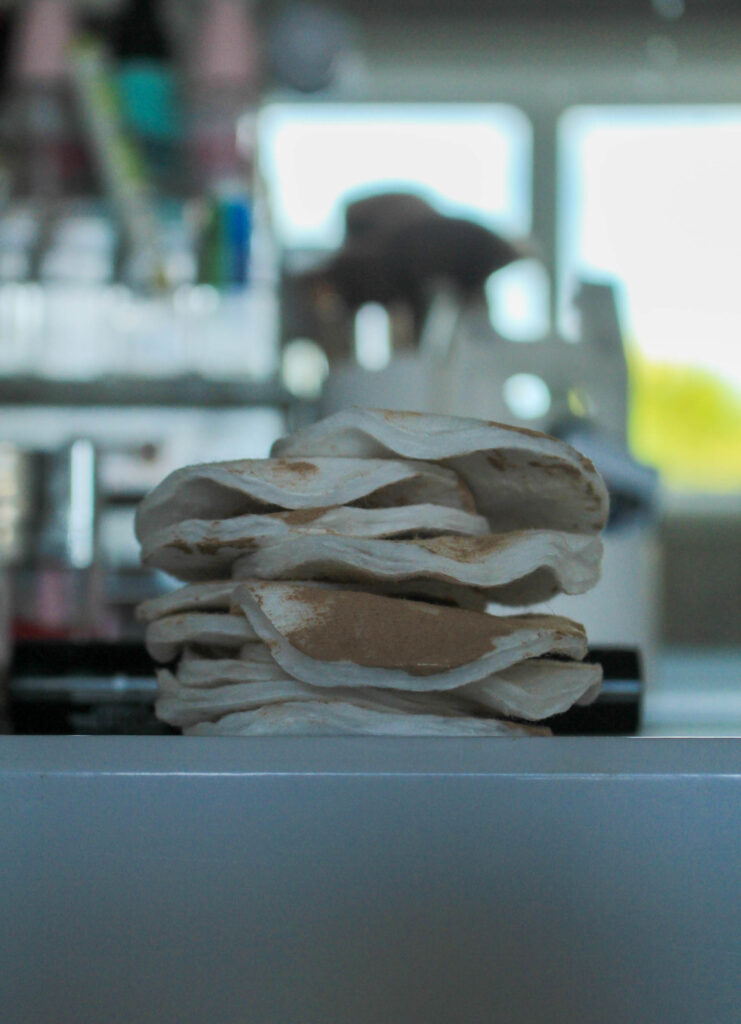
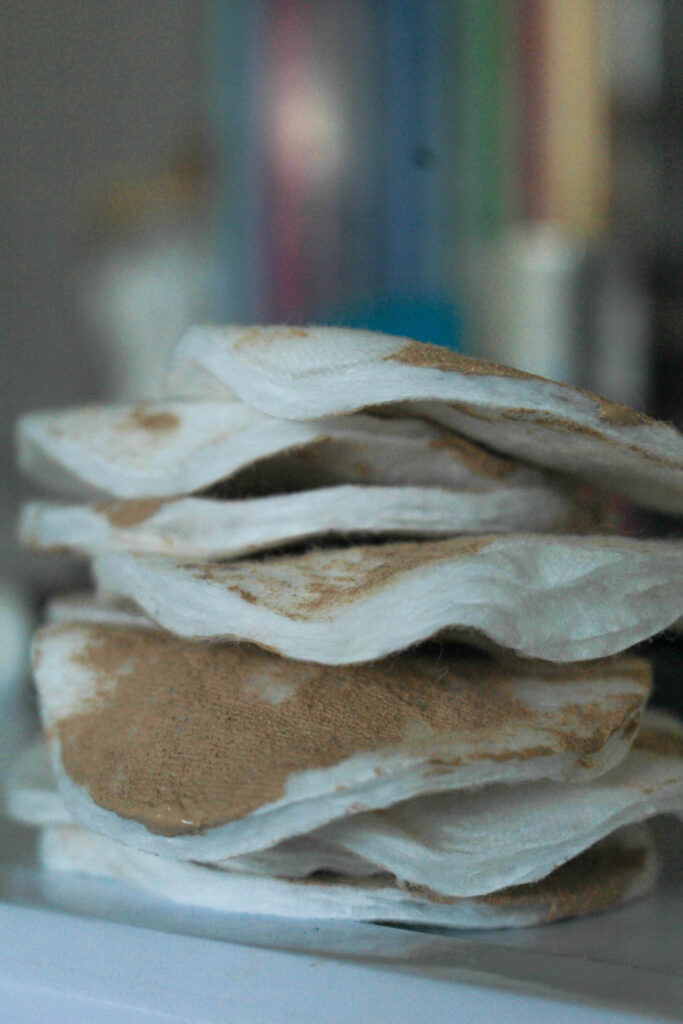
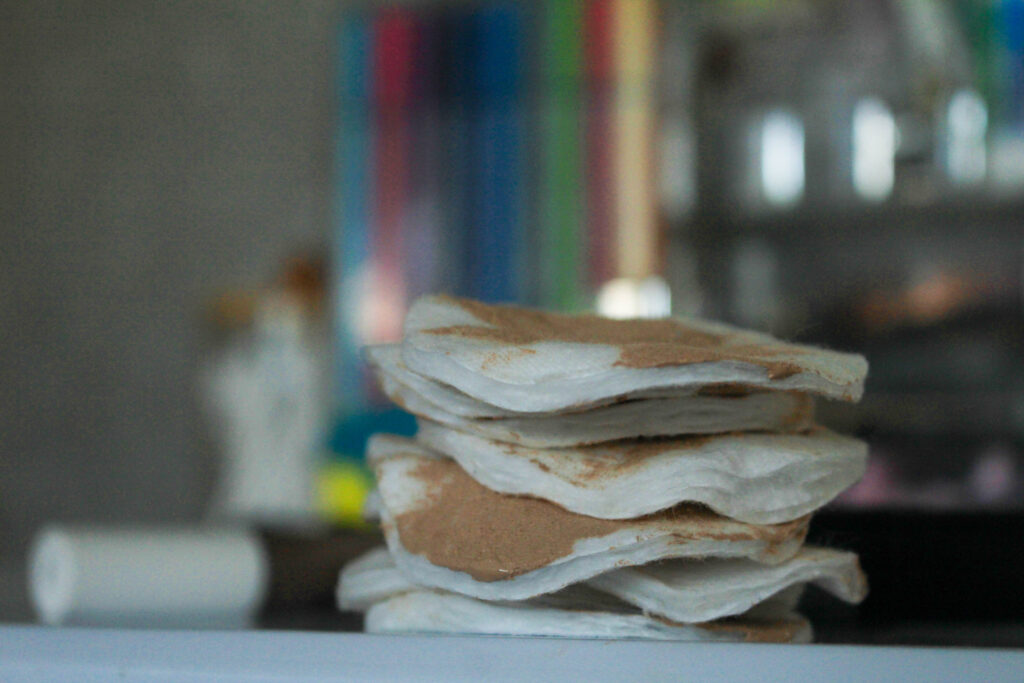
I have chosen to include three variations of my idea of a pile of cotton pads with thick makeup smeared across them for the same reasons as my previous three with the eyelash curler. I feel that by creating three similar images using different angles, this will allow me to experiment more with my photobook when I begin organising the layout as I will be able to be more flexible in my placement.
My idea behind this was to show how young girls may struggle with their self-esteem when it comes to their appearance, leading them to use a high amount of foundation every day in order to cover up their insecurities and feel more confident. This tends to happen with extremely young girls, for example 12 year olds when they begin secondary school. I wanted to highlight this as it is such an absurd idea that a 11-12 year old would be feeling so uncomfortable in their own skin, so I felt that by showing a large amount of cotton pads covered in foundation, this would allow me to show how ridiculous this concept actually is in a visual way. The tower of cotton pads looks strange and abnormal, allowing me to associate this thought with the meaning behind the image.
Also, by doing this I include the formal elements into the image, specifically line and texture, as the roughness of the cotton pad can be seen to juxtapose the liquidity of the foundation. Whilst this doesn’t contribute to the conceptual side of the image or actually contribute to the topic of my study, this makes the image more appealing to the viewer as it means that there is greater detail and depth in the photograph. As this is paired with my short depth of field, this means that the image has a large contrast between the foreground and background to make the cotton pads stand out even further.
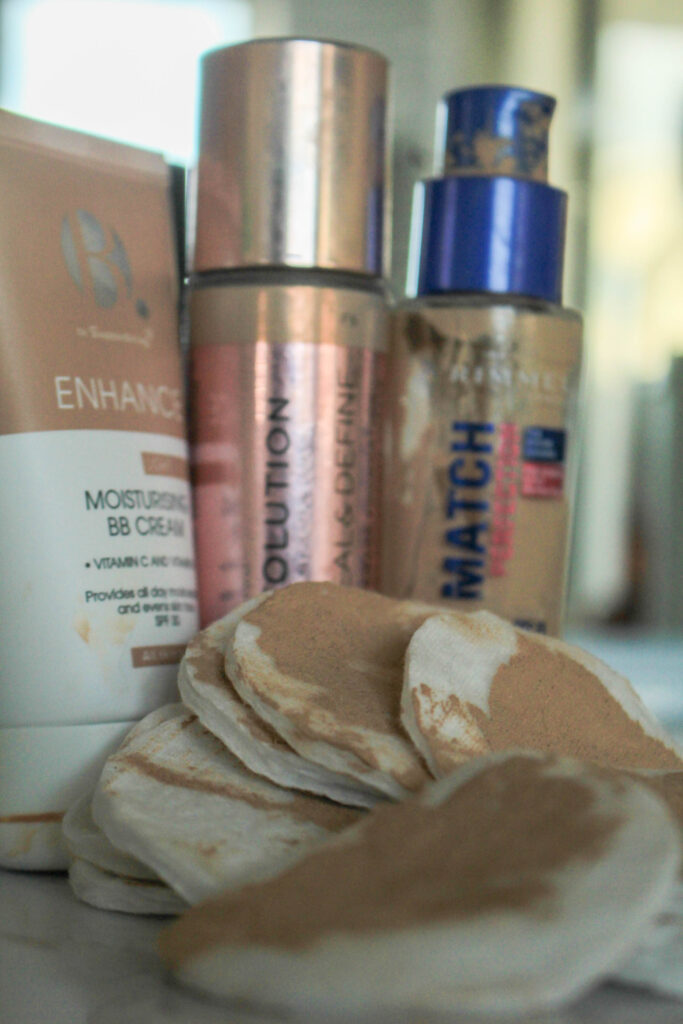
This was one of my yellow images as I am still unsure whether I will be including this in my photobook, this depends on the quality of my other images in other photoshoots. I wanted to compose the cotton pads in a different way, whilst still using a soft focus on the image so that there is consistency across my work. I toppled over the tower, making it look more natural, and then lined up some foundation tubes behind.
I chose to use three foundation tubes in the background to try and demonstrate the high amount of foundation being used to cover up foolish insecurities that many young girls face. I wanted to do this because the other images implicitly suggest this whilst this image is able to visually communicate this.
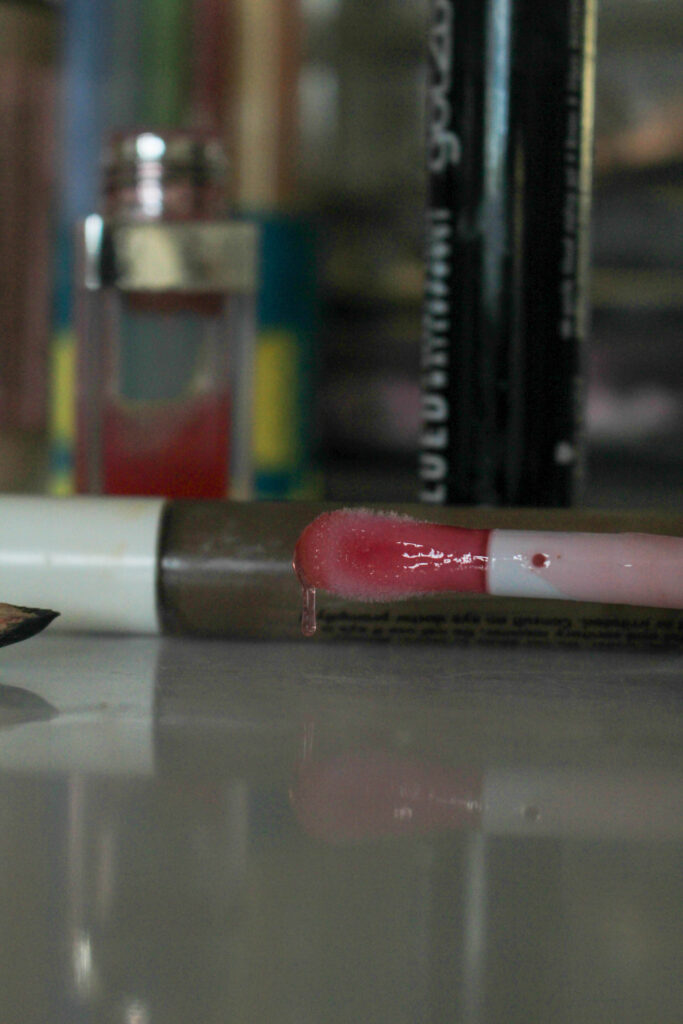
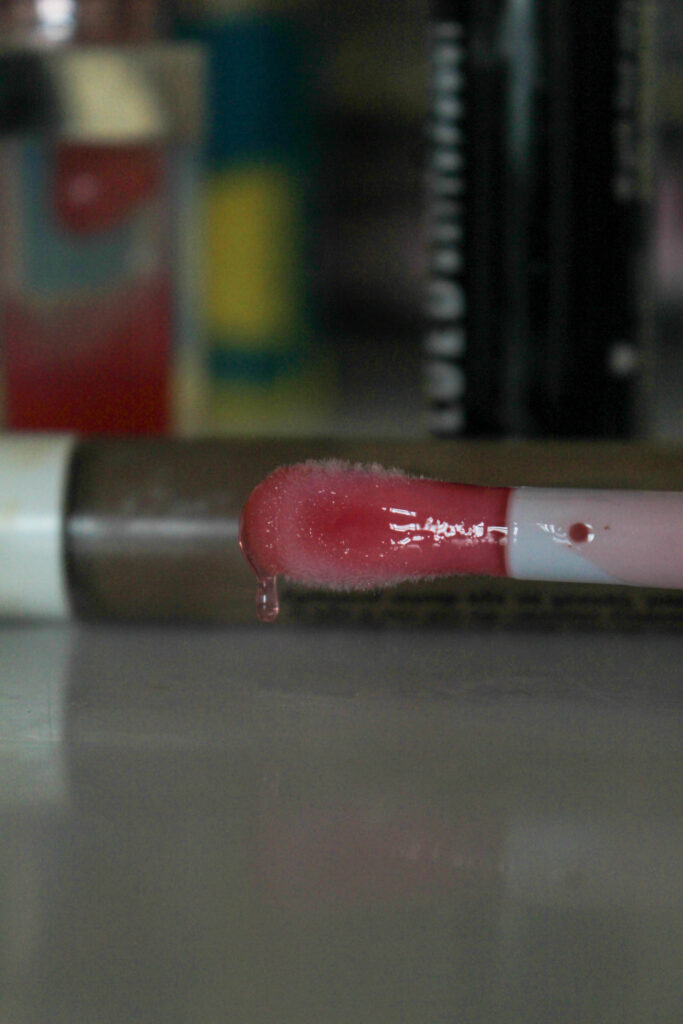
This image is used as a detail shot to incorporate makeup into my photoshoots as this is a key factor in explaining what my photobook represents. This image uses a short depth of field in order to gain the viewers complete focus on the drip of lipgloss.
I wanted to create an image like this in order to show how makeup may be frantically put on out of distress due to the high pressure of having a low self-esteem, and how this pressure is significant to a young girls life and may be consuming. I kept the image at quite a low-exposure as otherwise I feel that the concept may not come across as unfortunate, as the use of a high-exposure may cause the viewer to assume that this has a positive meaning behind it. This way, the pink of the applicator is still the most predominant and eye-catching factor of the image without being vibrant.
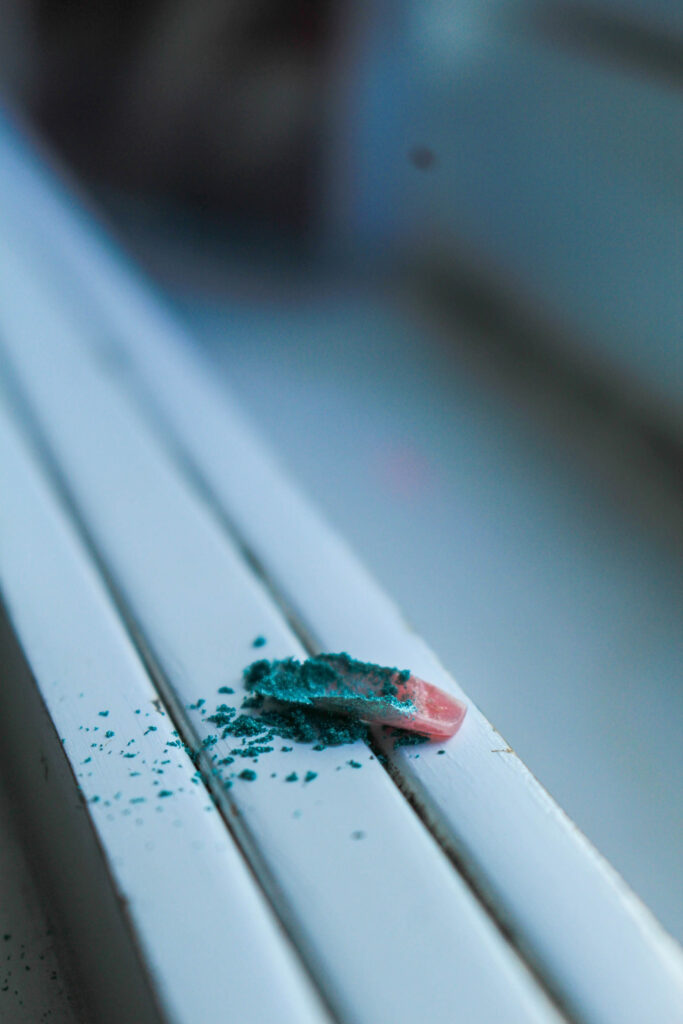
This is one of my favourite images because I think that the entire composition has been extremely successful. The soft focus means that the viewer’s focus is solely on the nail and clusters of glitter, making this extremely defined.
I tapped glitter onto the broken nail to symbolise blood being on it as if a girls acrylic nail had snapped off.
My initial idea when trying to figure out how I would shoot this image is to reinforce my references to this ‘beauty is pain’ ideology surrounding the need to fit into the perceived beauty standard. Of course, having a nail snap off would be incredibly painful, however this pain has stemmed from wanting to feel beautiful. I then began thinking of other ways this could be relevant to my work, with this being able to be interpreted in the terms of male violence, for example a girl experiencing this for getting her nails done as her partner believes she is having these treatments done in order to ‘impress other people’ when it’s sole purpose is for the feelings of the woman and feeling beautiful in herself. I think that this is a very important way to look at the image as this is an aspect of being in a controlled and toxic relationship, where a woman may feel unable to get these beauty treatments done for herself out of the fear of her significant other believing that she is trying to impress others.
Here, there is a direct comparison of the colours blue and pink which is a clear notion towards gender stereotypes as blue is commonly associated with the male gender, and pink with female. This means I can create a direct reference to critiquing gender roles that are created in society. I think that this image has a clear link to those belonging to Altman, however it uses a short depth of field instead to create a distinct focus on the nail, removing any chance of the background overpowering the object.
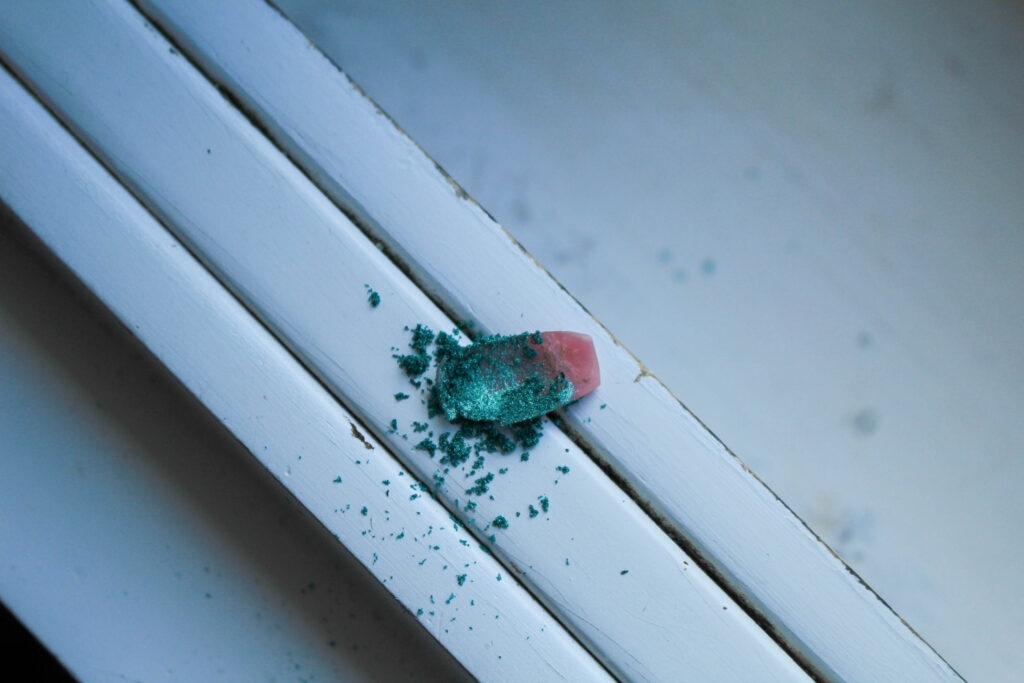
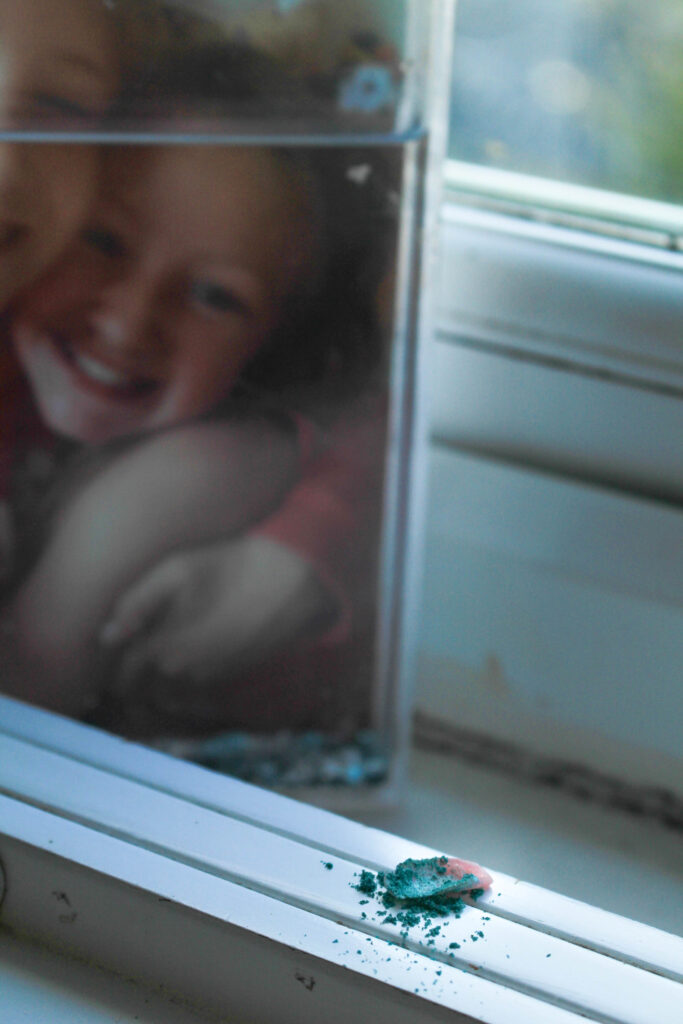
I wanted to also include this image and add my friends childhood picture into the background to add a sense of vulnerability into the image. By using a short depth of field again, I have made the childhood image stay slightly out of focus so that it is still visible. I did this because I wanted to get the viewer to reflect how a young girl’s priorities should be going outside and having fun with her friends, rather than the way she looks. I think that this image is really important in getting the viewer to question the value that the beauty standard has in society, and actually evaluate how damaging this is in the media, especially against impressionable girls who can easily be influenced.
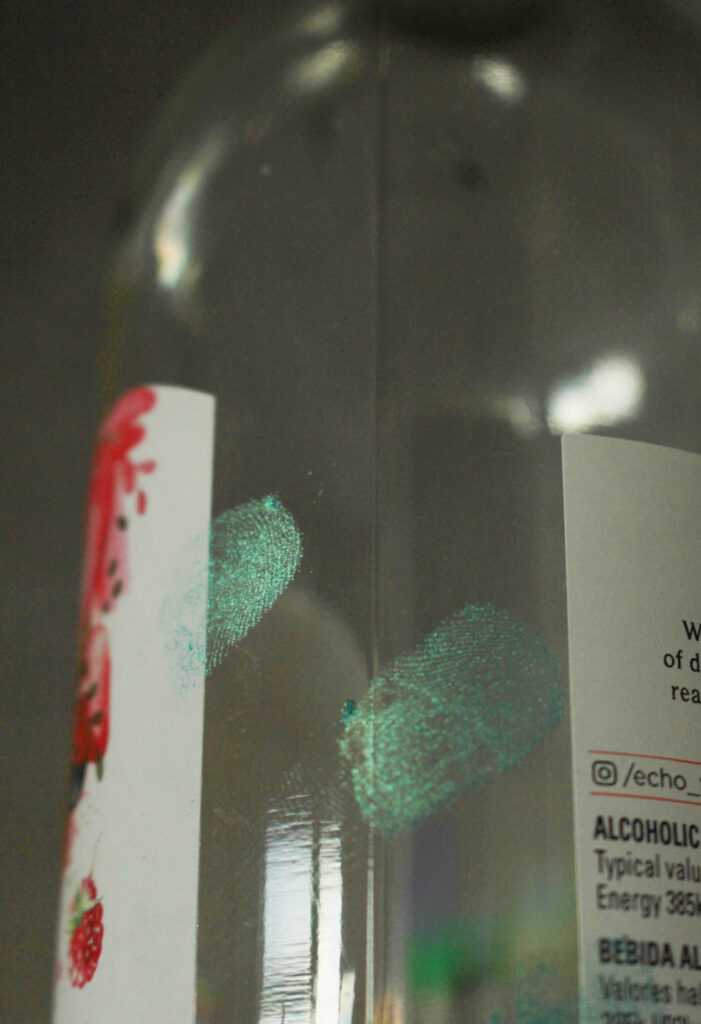
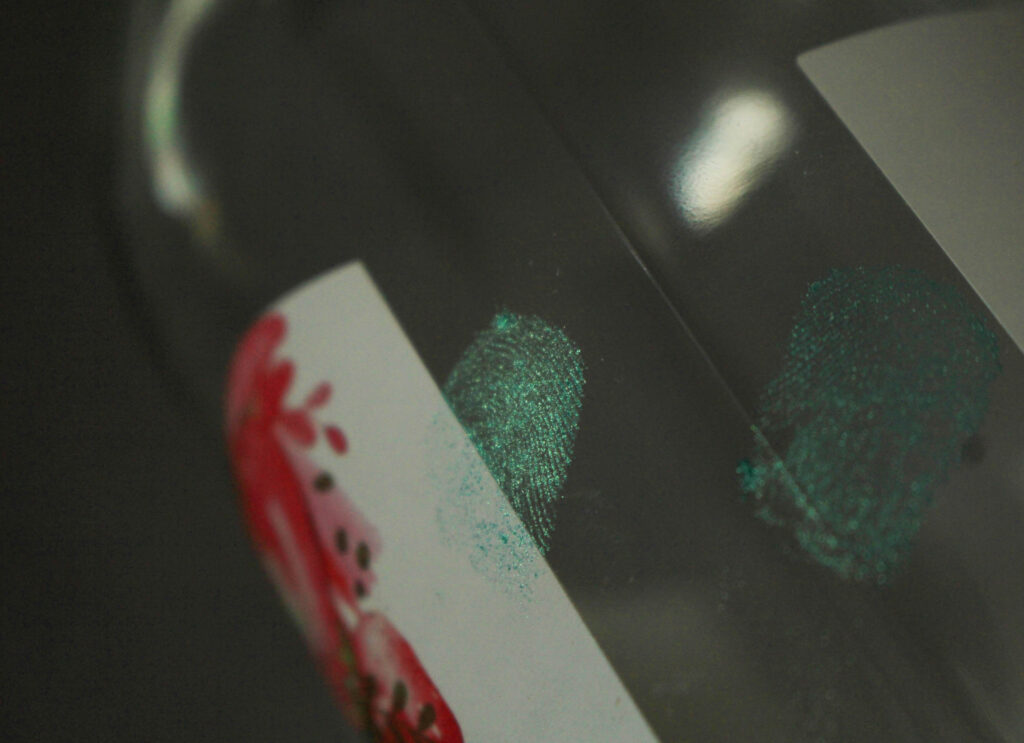
I created two fingerprints onto a bottle of wine for these two photos, and took up-close shots to get a clear shot of the ridges of my fingerprint to make deep detail.
I did this onto a wine bottle to highlight how the pressures to fit into the beauty standard are so incredibly damaging that this can result in the dependency on things such as alcohol or drugs in order to create an outlet for coping with the crushing manner of a low self-esteem. I also did this because it is can also be interpreted towards domestic abuse, being that around 40-60% of reported domestic abuse situations involved alcohol or drugs use. Addiction is a large factor in coercive and controlling behaviour, and can lead to the person displaying erratic and toxic behaviour. This can not only result in being emotionally and psychologically damaging to the woman due to fear of their husband/ boyfriend having an active role in addiction, but also physical damage may be incurred which is extremely dangerous especially when the abuser has less control over their impulsivity.
This can also be a link to how women in an abusive relationship have a higher likelihood of building a reliance on drugs or alcohol in order to feel numb to their trauma or pain that they are experiencing by feeling entrapped in the relationship. This is very dangerous because it would cause that woman or young girl to feel even more out of control of their life, meaning that their partners awful behaviour can continue without any restriction.
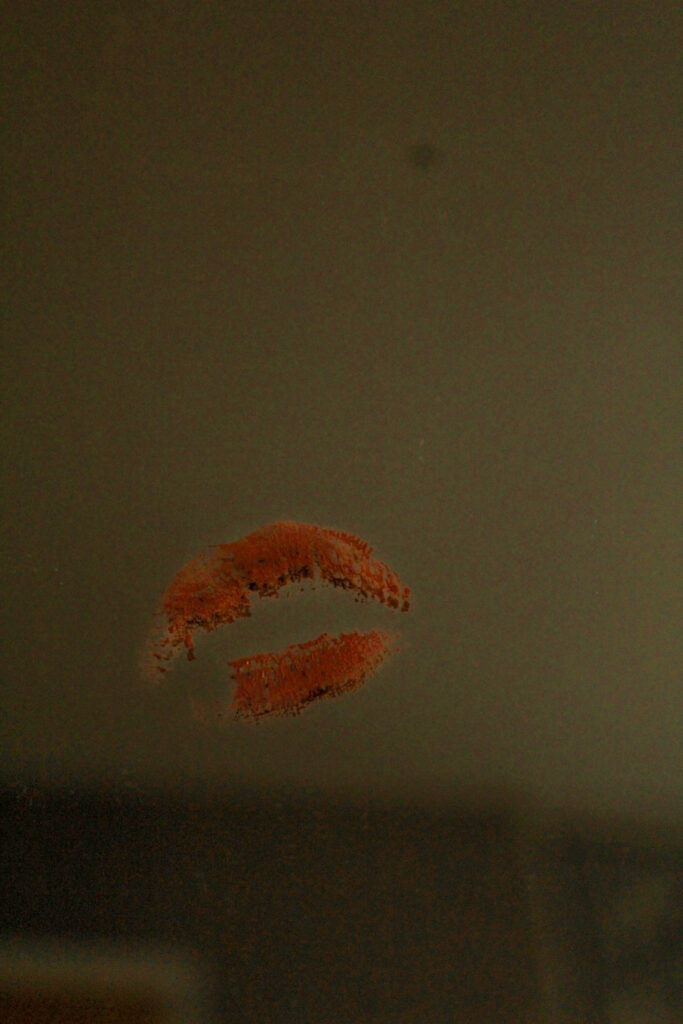
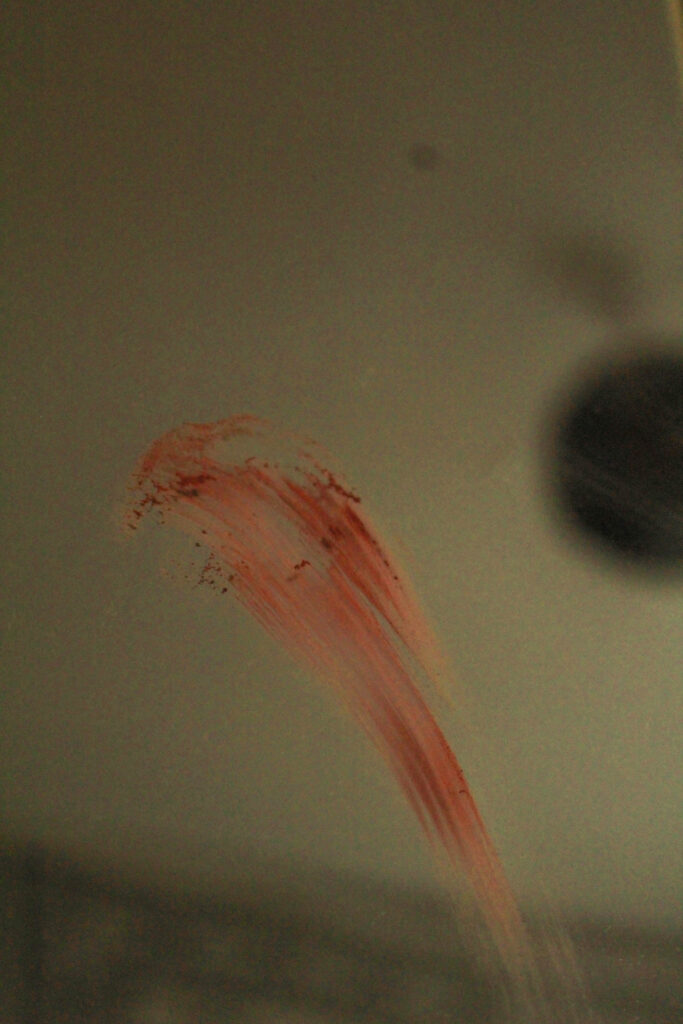
For these two images, I created a lipstick mark on the mirror and then smeared it downwards after. I tried to do this using glitter, however it wasn’t as effective as the glitter wouldn’t sit in place making it hard to tell what was actually on the mirror.
I did this as a nod to the beauty standard, with my plan being to make this into a diptych in my photobook, showing that makeup shouldn’t hold such a high significance in society and needs to stop being normalised towards young girls who should not be concerned with the way they look without makeup.
I smeared the lipstick down the mirror to show that its importance should be wiped away, and that makeup should be perceived as an enjoyable thing to be used rather than a defence from insecure thoughts and feelings. I would like to experiment with this set of images in photoshop and try turn the lipstick into glitter as this will make my image more relevant to the work of Hannah Altman.
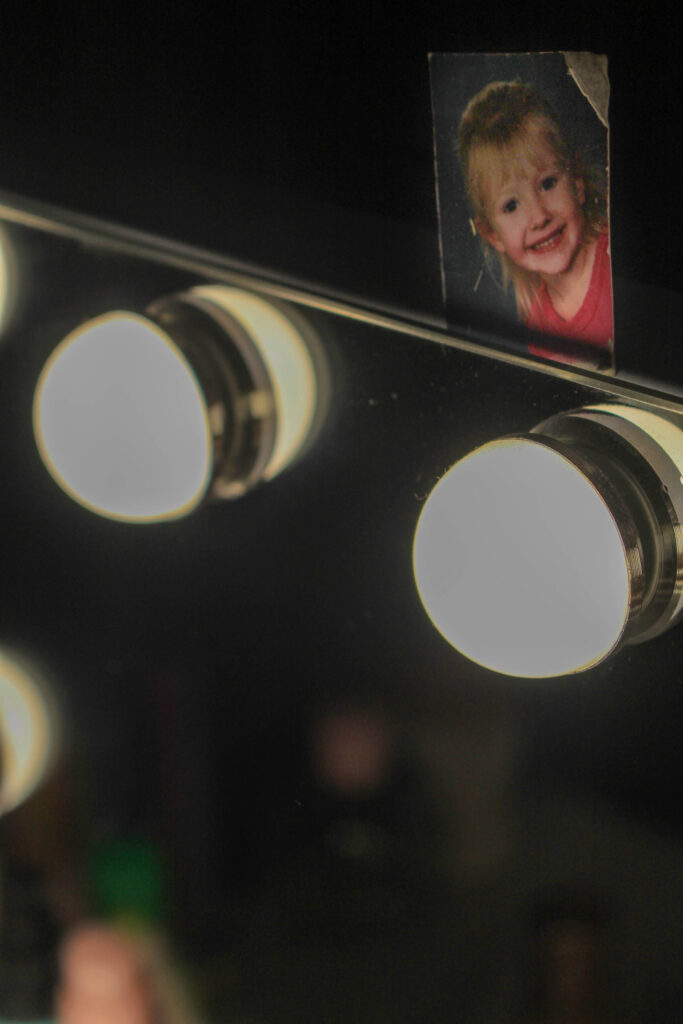
Finally, this image is to also create that sense of vulnerability again in the same way that I intended with my image of the acrylic nail with a childhood photo out of focus in the background. This time, I made the mirror have a soft focus, and create detail on another archived image. I wanted to use the mirror as it has a similar aesthetic to old Hollywood mirrors, which is relevant to the beauty standard as this has altered from then to now.
My intention behind this image is to highlight once again that appearance should not be a priority at such a young age, which is why the childhood image is placed above the reflection of the mirror to serve as a reminder that every time the girl judges or insults her own appearance, she is also saying that to her younger self. This causes the viewer to reflect on their own actions, and how they would feel if someone said those awful things that they say about themselves to their younger self. This adds emotionality to the image that can be provoking in minimising how young girls and women think about themselves due to the comments made by the media, men and even other women in reference to the beauty standard.

